-
Content count
361 -
Joined
-
Last visited
File Comments posted by wazalo68
-
-
F-104J?
Specialized interceptor version of the F-104G for the Japanese ASDF, built under license by Mitsubishi for the air-superiority fighter role, armed with cannon and four Sidewinders; no strike capability. Some were converted to UF-104J radio-controlled target drones and destroyed. Total of 210 built, three built by Lockheed, 29 built by Mitsubushi from Lockheed built components and 178 built by Mitsubishi. After retired in Japan, U.S. delivered some 104J/DJs to the airforce of Taiwan.F-104DJ?
Dual-control trainer version of F-104J for Japanese Air Self-Defense Force, 20 built by Lockheed and assembled by Mitsubishi. After retired in Japan, U.S. delivered some 104J/DJs to the airforce of Taiwan. -
What if' F/A-16E/F Block60 Desert Vipers......................
-
Denissoliveira.. Mirage V french Air Force Pack?
-
Good, stand by, thanks!
-
Mirage F-1E Iraq/Iran Pack................
The delivery of Mirages began in the February 1981 after a delay of several months as a result of the outbreak of the Iran-Iraq war in September 1980 and after overcoming all the obstacles of political and logistical France started delivery of the aircraft were taking off from France across the Mediterranean and then landing in Cyprus to refuel and fly towards Jordan and then to enter the territory of Iraq where Saddam Air Base in Qayyarah / Shirqat a new air base for the accommodation Iraqi Mirage aircrafts.
The first squadron was form of the aircrafts Mirage the squadron No. 79.
The numbers of Iraqi Mirage F1, which in turn contracted by Iraq and by years of contracting and delivery as follows: -
- Mirage single-seat fighter F1EQ
1980-1981 (16 Mirage F1EQ) carried the numbers (4004-4019)
1981-1982 (16 Mirage F1EQ-2) carried the numbers (4020-4035)
1982-1984 (28 Mirage (F1EQ-4) carried the numbers (4500-4503 and 4506-4529)
1983-1985 (20 Mirage F1EQ-5) carried the numbers (4560-4579)
1988 - 1990 (18 Mirage F1EQ-6) carried the numbers (4600-4608 and 4615-4623)
12 aircraft Mirage F1EQ-7 has not been supplied to Iraq after the UN's embargo after the occupation of Kuwait in 1990.- Mirage dual-seat fighter F1BQ
1980-1981 (2 Mirage F1BQ) carried the numbers (4000-4001)
1981-1982 (2 Mirage F1BQ) carried the numbers (4002-4003)
1982 - 1984 (5 Mirage F1BQ) carried the numbers (4504-4505 and 4556-4558)
1988-1989 (6 Mirage F1BQ) carried the numbers (4609-4614)F1BQ 3 aircraft had not been delivered to Iraq as a result of the UN's embargo after 1990.
Total: -
98 aircrafts a single seat fighter.
15 aircrafts double seat fighter.
And it is so total 113 Mirage Iraq had been contracted and were delivered, which sent 24 aircrafts of them to its neighbor Iran in 1991. And out of 15 aircrfts were didn't delivred to Iraq.
-
Mirage F-1 Iraq Pack:
Mirage F1EQ : Export version of the Mirage F1E for Iraq. 16 built.
Mirage F1EQ-2 : Single-seat air defence fighter version for Iraq. 16 built.
Mirage F1EQ-4 : Single-seat multi-role fighter, ground-attack, reconnaissance version for Iraq. 28 built.
Mirage F1EQ-5 : Single-seat anti-shipping version for Iraq. 20 built.
Mirage F1EQ-6 : Single-seat anti-shipping version for Iraq. 30 built. -
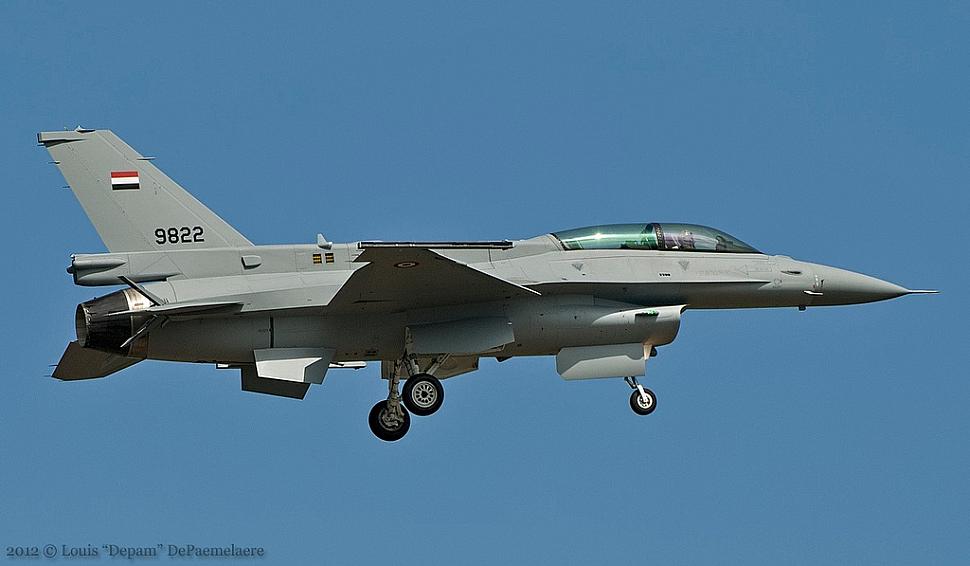
EAF F-16D block 52 #9822 is coming in for landing at NAS Fort Worth on August 8th, 2012 after a test flight. [Photo by Louis DePaemelaere]
-
Croatia - Hrvatsko Ratno Zrakoplovstvo
Rumor has it that Croatia is looking to replace its MiG-21bis force with a modern fighter, preferably the F-16. In the late nineties a couple of Aviano based USAF F-16C's performed a series of demonstration flights in Croatia to back a possible sale of F-16s to that country. Since, no further news has been released about the subject.
-
 1
1
-
-
Mirage F-1 Irak & Irán pack!
-
good work....................waitng for McDonnell Douglas US NAVY/MARINES F-4 B/J/N/S pack
-
good work....................waitng for US NAVY/MARINES McDonnell Douglas F-4 B/J/N/S pack
-
good work....................waitng for US NAVY/MARINES McDonnell Douglas F-4 B/J/N/S pack
-
good work............
Hawker Hunter variants
PrototypesHawker P.1067
Prototype, first flight 20 July 1951, three built with the first later modified as a Hunter Mk 3 for the successful World Speed Record attempts.
WB188 was the prototype that first flew on 20 July 1951 piloted by Neville Duke at Boscombe Down. After being used for performance and handling trials it was modified in 1953 and fitted with an Avon RA7R engine for what was a successful world air speed record attempt in September 1953.
WB195 was the second prototype and first flown on 5 May 1952, it was the first with Aden-gun armament and other military equipment.
WB202 was the third prototype and first flew on the 30 November 1952 powered by an Armstrong-Whitworth Sapphire engine.Hawker P.1083
Supersonic design based on the P.1067 with 50 degree wing sweep and afterburning Avon engine. Construction abandoned and the fuselage and tail were used as basis for the P.1099.Hawker P.1101
Two-seat trainer prototype, first flight 8 July 1955, two built.Production versions
Hunter F.1
First production version, Avon 113 engine, first flight 16 May 1953, 139 built, 113 built by Hawker Aircraft at Kingston-upon-Thames and a further 26 at lackpool.Hunter F.2
Sapphire 101 engine, first flight 14 October 1953, 45 built by Armstrong Whitworth at Coventry. Sole survivor WN904 on static display at Sywell Aerodrome, Northampton.Hunter Mk 3
Sometimes mistakenly called F.3, but it carried no weapons. The first prototype fitted with afterburning Avon RA.7R with 9,600 lbf (42.70 kN) engine, pointed nose, airbrakes on the sides of the fuselage, and a revised windscreen. Used to set raise the world's absolute air speed record to 727.6 mph (1,171 km/h) off the English south coast on 7 September 1953, and days later to set a new 62 mi (100 km) circuit record. It was sold in 1955 and retired as an RAF ground instructional airframe. Now in the Museum at Tangmere, Sussex.Hunter F.4
Additional bag-type fuel tanks in the wings, provision for underwing fuel tanks, Avon 115 (later Avon 121) engine, blisters under the nose for ammunition links, first flight 20 October 1954, 349 built at Kingston-upon-Thames and Blackpool.Hunter F.5
F.4 with Sapphire 101 engine, 105 built by Armstrong Whitworth at Coventry.Hunter F.6
Single-seat clear-weather interceptor fighter. Powered by one 10,150 lbf (45.17 kN) Rolls-Royce Avon 203 turbojet engine, revised wing with a leading edge "dogtooth" and four hardpoints, and a follow-up tailplane on later aircraft (also rerofitted to the early production examples) to improve pitch response at high Mach number, first flight 22 January 1954, 384 built.Hunter F.6A
Modified F.6 with brake parachute and 230 gallon inboard drop tanks, for use at RAF Brawdy, where diversion airfields were distant.Hunter T.7
Two-seat trainer built for the RAF. A side by side seating nose section replaced the single seat nose. Engine and systems as for the F.4; six were rebuilt F.4s, and 65 were new build. The dog-tooth leading edge and follow-up tailpane mods, as on the F.6, were fitted to the T.7.Hunter T.7A
T.7 modified with the Integrated Flight Instrumentation System (IFIS). Used by the RAF as a Blackburn Buccaneer conversion training aircraft.Hunter T.8
Two-seat trainer for the Royal Navy. Fitted with an arrestor hook for use on RN airfields but otherwise similar to the T.7, ten-built new and 18 conversions from F.4s.Hunter T.8B
T.8 with TACAN radio-navigation system and IFIS fitted, cannon and ranging radar removed. Used by the Royal Navy as a Blackburn Buccaneer conversion training aircraft, four conversions.Hunter T.8C
T.8 with TACAN fitted, 11 conversionsHunter T.8M
T.8 fitted with the Sea Harrier's Blue Fox radar, used by the Royal Navy to train Sea Harrier pilots.Hunter FGA.9
Single-seat ground-attack fighter version for the RAF; all were modified from F.6 airframes. Strengthened wing, 230 gallon inboard drop tanks, tail chute, increased oxygen capacity, and bobweight in pitch control circuit to increase stick force in ground attack manoeuvres, 128 conversions.Hunter FR.10
Single-seat reconnaissance version; all 33 were rebuilt F.6 airframes, with 3 x F95 cameras, revised instrument panel layout, brake parachute and 230 gallon inboard drop tanks. Increased oxygen as for the FGA.9, but no pitch bobweight.Hunter GA.11
Single-seat weapons training version for the Royal Navy. Forty ex-RAF Hunter F.4s were converted into the Hunter GA.11. The GA.11 was fitted with an arrester hook and some later had a Harley light. The guns were removed.Hunter PR.11
Single-seat reconnaissance version for the Royal Navy. The nose was as on the FR.10.Hunter Mk 12
Two-seat test aircraft for the Royal Aircraft Establishment. One built, converted from an F.6 airframe.Export versions
Hunter Mk 50
Export version of the Hunter F.4 fighter for Sweden. Swedish designation J 34, 120 built.Hunter Mk 51
Export version of the Hunter F.4 fighter for Denmark, 30 built.Hunter Mk 52
Export version of the Hunter F.4 fighter for Peru, 16 conversions from F.4sHunter T.53
Export version of the Hunter T.7 trainer for Denmark, two built.Hunter Mk 56
Export version of the Hunter F.6 fighter for India, 160 built. Brake parachute added and the provision to carry 500 lb (227 kg) bombs, minor changes to the avionic systems including the removal of the UHF radio facility.Hunter FGA.56A
Export version of the Hunter FGA.9 ground-attack fighter for India.Hunter FGA.57
Export version of the Hunter FGA.9 ground-attack fighter for Kuwait, four conversions from F.6s.Hunter Mk 58
Export version of the Hunter F.6 fighter for Switzerland, 88 built and 12 conversions from F.6s.Hunter Mk 58A
Export version of the Hunter FGA.9 ground-attack fighter for Switzerland. 52 conversions from other marks.Hunter FGA.59
Export version of the Hunter FGA.9 ground-attack fighter for Iraq, 24 conversions.Hunter FGA.59A
18 aircraft were sold to Iraq as part of a follow-on order, 18 conversions from F.6s.Hunter FGA.59B
Four aircraft were sold to Iraq as part of a follow-on order, 4 conversions from F.6s.Hunter F.60
Export version of the Hunter F.6 fighter for Saudi Arabia, 4 conversions from F.6s.Hunter T.62
Export version of the Hunter T.7 trainer for Peru.Hunter T.66
Two-seat training version for the Indian Air Force, powered by a Rolls-Royce Avon 200-series turbojet engine, 20-built.Hunter T.66A
A composite Hunter, built from a damaged Belgian F.6 bought back by the company, and a 2-seat nose originally built for display at the Paris Salon. Used as a demonstration aircraft, registered G-APUX. Finished in red and white, and used for promotional displays and in evaluations. Later sold to Chile as a T.72.Hunter T.66B
Export version of the Hunter T.66 trainer for Jordan, one-built and two-conversions.Hunter T.66C
Export version of the Hunter T.66 trainer for Lebanon, three conversions from F.6s.Hunter T.66D
12 aircraft sold to India as part of a follow-on order, converted from F.6s.Hunter T.66E
Five aircraft sold to India as part of a follow-on order, converted from F.6s.Hunter T.67
Export version of the Hunter T.66 trainer for Kuwait, four conversions from F.6s.Hunter T.68
Export version of the Hunter T.66 trainer for Switzerland, eight conversions from F.5s and Mk 50s.Hunter T.69
Export version of the Hunter T.66 trainer for Iraq, three conversions from F.6s.Hunter FGA.70
Export version of the Hunter FGA.9 ground-attack fighter for Lebanon, four conversions from F.6s.Hunter FGA.70A
Lebanon.Hunter T.70
This was the unofficial designation given to two ex-RAF Hunter T.7s sold to Saudi Arabia.Hunter FGA.71
export version of the Hunter FGA.9 ground-attack fighter for Chile.Hunter FR.71A
Export version of the Hunter FR.10 reconnaissance aircraft for Chile.Hunter T.72
Export version of the T.66 trainer for Chile.Hunter FGA.73
Export version of the Hunter FGA.9 ground-attack fighter for Jordan.Hunter FGA.73A
Four aircraft sold to Jordan as part of a follow-on order.Hunter FGA.73B
Three aircraft sold to Jordan as part of a follow-on order.Hunter FGA.74
12× Export version of the Hunter FGA.9 ground-attack fighter for Singapore, upgraded in late 1970s and re-designated as Hunter F.74S.[1][2][3]Hunter FR.74A
4× Export version of the Hunter FR.10 reconnaissance aircraft for Singapore, upgraded in late 1970s and re-designated as Hunter FR.74S.[1][2][3]Hunter FR.74B
22× aircraft delivered to Singapore as part of a follow order, upgraded in late 1970s and re-designated as Hunter FR.74S.[1][2][3]Hunter T.75
4× Export version of the Hunter T.66 trainer for Singapore, upgraded in late 1970s and re-designated as Hunter T.75S.[1][2][3]Hunter T.75A
4× aircraft delivered to Singapore as part of a follow-on order (A fifth aircraft was lost in an accident before delivery), upgraded in late 1970s and re-designated as Hunter T.75S.[1][2][3]Hunter FGA.76
Export version of the Hunter FGA.9 ground-attack fighter for Abu Dhabi.Hunter FR.76A
Export version of the Hunter FR.10 reconnaissance aircraft for Abu Dhabi.Hunter T.77
Export version of the Hunter T.7 trainer for Abu Dhabi.Hunter FGA.78
Export version of the Hunter FGA.9 ground-attack fighter for Qatar.Hunter T.79
Export version of the Hunter T.7 trainer for Qatar.Hunter FGA.80
Ex-RAF FGA.9 ground-attack fighter sold to Kenya.Hunter T.81
Export version of the Hunter T.66 trainer for Kenya.References
Notes
1.^ Jump up to: a b c d e "Hawker Hunter Survivor 527". www.thunder-and-lightnings.co.uk.
2.^ Jump up to: a b c d e Greg, Goebel. "Hawker Hunter In British & Foreign Service". www.wingweb.co.uk. Retrieved 15 April 2011.
3.^ Jump up to: a b c d e Peter, Atkins (November 1994). "Singapore or Bust". Air Forces Monthly (Key Publishing Ltd) (67). ISSN 0955-7091.Bibliography
Deacon, Ray. Hawker Hunter - 50 Golden Years. Feltham, UK: Vogelsang Publications, 2001. ISBN 0-9540666-0-X.
Griffin, David. Hawker Hunter 1951 to 2007. Tacoma, WA, USA: Lulu Enterprises. www.Lulu.com, 2007. ISBN 1-4303-0593-2.
Hannah, Donald. Hawker FlyPast Reference Library. Stamford, Lincolnshire, UK: Key Publishing Ltd., 1982. ISBN 0-946219-01-X.
Jackson, Robert. Modern Combat Aircraft 15, Hawker Hunter. Shepperton, Surrey, UK: Cromwell Books, 1982, ISBN 0-7110-1216-4.
James, Derek N. Hawker, an Aircraft Album No. 5. New York: Arco Publishing Company, 1973. ISBN 0-668-02699-5. (First published in the UK by Ian Allan in 1972.)
Mason, Francis K. Hawker Aircraft since 1920. London: Putnam, 1991. ISBN 0-85177-839-9
Winchester, Jim, ed. "Hawker Hunter." Military Aircraft of the Cold War (The Aviation Factfile). London: Grange Books plc, 2006. ISBN 1-84013-929-3. -
good work............
Hawker Hunter variants
PrototypesHawker P.1067
Prototype, first flight 20 July 1951, three built with the first later modified as a Hunter Mk 3 for the successful World Speed Record attempts.
WB188 was the prototype that first flew on 20 July 1951 piloted by Neville Duke at Boscombe Down. After being used for performance and handling trials it was modified in 1953 and fitted with an Avon RA7R engine for what was a successful world air speed record attempt in September 1953.
WB195 was the second prototype and first flown on 5 May 1952, it was the first with Aden-gun armament and other military equipment.
WB202 was the third prototype and first flew on the 30 November 1952 powered by an Armstrong-Whitworth Sapphire engine.Hawker P.1083
Supersonic design based on the P.1067 with 50 degree wing sweep and afterburning Avon engine. Construction abandoned and the fuselage and tail were used as basis for the P.1099.Hawker P.1101
Two-seat trainer prototype, first flight 8 July 1955, two built.Production versions
Hunter F.1
First production version, Avon 113 engine, first flight 16 May 1953, 139 built, 113 built by Hawker Aircraft at Kingston-upon-Thames and a further 26 at lackpool.Hunter F.2
Sapphire 101 engine, first flight 14 October 1953, 45 built by Armstrong Whitworth at Coventry. Sole survivor WN904 on static display at Sywell Aerodrome, Northampton.Hunter Mk 3
Sometimes mistakenly called F.3, but it carried no weapons. The first prototype fitted with afterburning Avon RA.7R with 9,600 lbf (42.70 kN) engine, pointed nose, airbrakes on the sides of the fuselage, and a revised windscreen. Used to set raise the world's absolute air speed record to 727.6 mph (1,171 km/h) off the English south coast on 7 September 1953, and days later to set a new 62 mi (100 km) circuit record. It was sold in 1955 and retired as an RAF ground instructional airframe. Now in the Museum at Tangmere, Sussex.Hunter F.4
Additional bag-type fuel tanks in the wings, provision for underwing fuel tanks, Avon 115 (later Avon 121) engine, blisters under the nose for ammunition links, first flight 20 October 1954, 349 built at Kingston-upon-Thames and Blackpool.Hunter F.5
F.4 with Sapphire 101 engine, 105 built by Armstrong Whitworth at Coventry.Hunter F.6
Single-seat clear-weather interceptor fighter. Powered by one 10,150 lbf (45.17 kN) Rolls-Royce Avon 203 turbojet engine, revised wing with a leading edge "dogtooth" and four hardpoints, and a follow-up tailplane on later aircraft (also rerofitted to the early production examples) to improve pitch response at high Mach number, first flight 22 January 1954, 384 built.Hunter F.6A
Modified F.6 with brake parachute and 230 gallon inboard drop tanks, for use at RAF Brawdy, where diversion airfields were distant.Hunter T.7
Two-seat trainer built for the RAF. A side by side seating nose section replaced the single seat nose. Engine and systems as for the F.4; six were rebuilt F.4s, and 65 were new build. The dog-tooth leading edge and follow-up tailpane mods, as on the F.6, were fitted to the T.7.Hunter T.7A
T.7 modified with the Integrated Flight Instrumentation System (IFIS). Used by the RAF as a Blackburn Buccaneer conversion training aircraft.Hunter T.8
Two-seat trainer for the Royal Navy. Fitted with an arrestor hook for use on RN airfields but otherwise similar to the T.7, ten-built new and 18 conversions from F.4s.Hunter T.8B
T.8 with TACAN radio-navigation system and IFIS fitted, cannon and ranging radar removed. Used by the Royal Navy as a Blackburn Buccaneer conversion training aircraft, four conversions.Hunter T.8C
T.8 with TACAN fitted, 11 conversionsHunter T.8M
T.8 fitted with the Sea Harrier's Blue Fox radar, used by the Royal Navy to train Sea Harrier pilots.Hunter FGA.9
Single-seat ground-attack fighter version for the RAF; all were modified from F.6 airframes. Strengthened wing, 230 gallon inboard drop tanks, tail chute, increased oxygen capacity, and bobweight in pitch control circuit to increase stick force in ground attack manoeuvres, 128 conversions.Hunter FR.10
Single-seat reconnaissance version; all 33 were rebuilt F.6 airframes, with 3 x F95 cameras, revised instrument panel layout, brake parachute and 230 gallon inboard drop tanks. Increased oxygen as for the FGA.9, but no pitch bobweight.Hunter GA.11
Single-seat weapons training version for the Royal Navy. Forty ex-RAF Hunter F.4s were converted into the Hunter GA.11. The GA.11 was fitted with an arrester hook and some later had a Harley light. The guns were removed.Hunter PR.11
Single-seat reconnaissance version for the Royal Navy. The nose was as on the FR.10.Hunter Mk 12
Two-seat test aircraft for the Royal Aircraft Establishment. One built, converted from an F.6 airframe.Export versions
Hunter Mk 50
Export version of the Hunter F.4 fighter for Sweden. Swedish designation J 34, 120 built.Hunter Mk 51
Export version of the Hunter F.4 fighter for Denmark, 30 built.Hunter Mk 52
Export version of the Hunter F.4 fighter for Peru, 16 conversions from F.4sHunter T.53
Export version of the Hunter T.7 trainer for Denmark, two built.Hunter Mk 56
Export version of the Hunter F.6 fighter for India, 160 built. Brake parachute added and the provision to carry 500 lb (227 kg) bombs, minor changes to the avionic systems including the removal of the UHF radio facility.Hunter FGA.56A
Export version of the Hunter FGA.9 ground-attack fighter for India.Hunter FGA.57
Export version of the Hunter FGA.9 ground-attack fighter for Kuwait, four conversions from F.6s.Hunter Mk 58
Export version of the Hunter F.6 fighter for Switzerland, 88 built and 12 conversions from F.6s.Hunter Mk 58A
Export version of the Hunter FGA.9 ground-attack fighter for Switzerland. 52 conversions from other marks.Hunter FGA.59
Export version of the Hunter FGA.9 ground-attack fighter for Iraq, 24 conversions.Hunter FGA.59A
18 aircraft were sold to Iraq as part of a follow-on order, 18 conversions from F.6s.Hunter FGA.59B
Four aircraft were sold to Iraq as part of a follow-on order, 4 conversions from F.6s.Hunter F.60
Export version of the Hunter F.6 fighter for Saudi Arabia, 4 conversions from F.6s.Hunter T.62
Export version of the Hunter T.7 trainer for Peru.Hunter T.66
Two-seat training version for the Indian Air Force, powered by a Rolls-Royce Avon 200-series turbojet engine, 20-built.Hunter T.66A
A composite Hunter, built from a damaged Belgian F.6 bought back by the company, and a 2-seat nose originally built for display at the Paris Salon. Used as a demonstration aircraft, registered G-APUX. Finished in red and white, and used for promotional displays and in evaluations. Later sold to Chile as a T.72.Hunter T.66B
Export version of the Hunter T.66 trainer for Jordan, one-built and two-conversions.Hunter T.66C
Export version of the Hunter T.66 trainer for Lebanon, three conversions from F.6s.Hunter T.66D
12 aircraft sold to India as part of a follow-on order, converted from F.6s.Hunter T.66E
Five aircraft sold to India as part of a follow-on order, converted from F.6s.Hunter T.67
Export version of the Hunter T.66 trainer for Kuwait, four conversions from F.6s.Hunter T.68
Export version of the Hunter T.66 trainer for Switzerland, eight conversions from F.5s and Mk 50s.Hunter T.69
Export version of the Hunter T.66 trainer for Iraq, three conversions from F.6s.Hunter FGA.70
Export version of the Hunter FGA.9 ground-attack fighter for Lebanon, four conversions from F.6s.Hunter FGA.70A
Lebanon.Hunter T.70
This was the unofficial designation given to two ex-RAF Hunter T.7s sold to Saudi Arabia.Hunter FGA.71
export version of the Hunter FGA.9 ground-attack fighter for Chile.Hunter FR.71A
Export version of the Hunter FR.10 reconnaissance aircraft for Chile.Hunter T.72
Export version of the T.66 trainer for Chile.Hunter FGA.73
Export version of the Hunter FGA.9 ground-attack fighter for Jordan.Hunter FGA.73A
Four aircraft sold to Jordan as part of a follow-on order.Hunter FGA.73B
Three aircraft sold to Jordan as part of a follow-on order.Hunter FGA.74
12× Export version of the Hunter FGA.9 ground-attack fighter for Singapore, upgraded in late 1970s and re-designated as Hunter F.74S.[1][2][3]Hunter FR.74A
4× Export version of the Hunter FR.10 reconnaissance aircraft for Singapore, upgraded in late 1970s and re-designated as Hunter FR.74S.[1][2][3]Hunter FR.74B
22× aircraft delivered to Singapore as part of a follow order, upgraded in late 1970s and re-designated as Hunter FR.74S.[1][2][3]Hunter T.75
4× Export version of the Hunter T.66 trainer for Singapore, upgraded in late 1970s and re-designated as Hunter T.75S.[1][2][3]Hunter T.75A
4× aircraft delivered to Singapore as part of a follow-on order (A fifth aircraft was lost in an accident before delivery), upgraded in late 1970s and re-designated as Hunter T.75S.[1][2][3]Hunter FGA.76
Export version of the Hunter FGA.9 ground-attack fighter for Abu Dhabi.Hunter FR.76A
Export version of the Hunter FR.10 reconnaissance aircraft for Abu Dhabi.Hunter T.77
Export version of the Hunter T.7 trainer for Abu Dhabi.Hunter FGA.78
Export version of the Hunter FGA.9 ground-attack fighter for Qatar.Hunter T.79
Export version of the Hunter T.7 trainer for Qatar.Hunter FGA.80
Ex-RAF FGA.9 ground-attack fighter sold to Kenya.Hunter T.81
Export version of the Hunter T.66 trainer for Kenya.References
Notes
1.^ Jump up to: a b c d e "Hawker Hunter Survivor 527". www.thunder-and-lightnings.co.uk.
2.^ Jump up to: a b c d e Greg, Goebel. "Hawker Hunter In British & Foreign Service". www.wingweb.co.uk. Retrieved 15 April 2011.
3.^ Jump up to: a b c d e Peter, Atkins (November 1994). "Singapore or Bust". Air Forces Monthly (Key Publishing Ltd) (67). ISSN 0955-7091.Bibliography
Deacon, Ray. Hawker Hunter - 50 Golden Years. Feltham, UK: Vogelsang Publications, 2001. ISBN 0-9540666-0-X.
Griffin, David. Hawker Hunter 1951 to 2007. Tacoma, WA, USA: Lulu Enterprises. www.Lulu.com, 2007. ISBN 1-4303-0593-2.
Hannah, Donald. Hawker FlyPast Reference Library. Stamford, Lincolnshire, UK: Key Publishing Ltd., 1982. ISBN 0-946219-01-X.
Jackson, Robert. Modern Combat Aircraft 15, Hawker Hunter. Shepperton, Surrey, UK: Cromwell Books, 1982, ISBN 0-7110-1216-4.
James, Derek N. Hawker, an Aircraft Album No. 5. New York: Arco Publishing Company, 1973. ISBN 0-668-02699-5. (First published in the UK by Ian Allan in 1972.)
Mason, Francis K. Hawker Aircraft since 1920. London: Putnam, 1991. ISBN 0-85177-839-9
Winchester, Jim, ed. "Hawker Hunter." Military Aircraft of the Cold War (The Aviation Factfile). London: Grange Books plc, 2006. ISBN 1-84013-929-3. -
good work............
Hawker Hunter variants
PrototypesHawker P.1067
Prototype, first flight 20 July 1951, three built with the first later modified as a Hunter Mk 3 for the successful World Speed Record attempts.
WB188 was the prototype that first flew on 20 July 1951 piloted by Neville Duke at Boscombe Down. After being used for performance and handling trials it was modified in 1953 and fitted with an Avon RA7R engine for what was a successful world air speed record attempt in September 1953.
WB195 was the second prototype and first flown on 5 May 1952, it was the first with Aden-gun armament and other military equipment.
WB202 was the third prototype and first flew on the 30 November 1952 powered by an Armstrong-Whitworth Sapphire engine.Hawker P.1083
Supersonic design based on the P.1067 with 50 degree wing sweep and afterburning Avon engine. Construction abandoned and the fuselage and tail were used as basis for the P.1099.Hawker P.1101
Two-seat trainer prototype, first flight 8 July 1955, two built.Production versions
Hunter F.1
First production version, Avon 113 engine, first flight 16 May 1953, 139 built, 113 built by Hawker Aircraft at Kingston-upon-Thames and a further 26 at lackpool.Hunter F.2
Sapphire 101 engine, first flight 14 October 1953, 45 built by Armstrong Whitworth at Coventry. Sole survivor WN904 on static display at Sywell Aerodrome, Northampton.Hunter Mk 3
Sometimes mistakenly called F.3, but it carried no weapons. The first prototype fitted with afterburning Avon RA.7R with 9,600 lbf (42.70 kN) engine, pointed nose, airbrakes on the sides of the fuselage, and a revised windscreen. Used to set raise the world's absolute air speed record to 727.6 mph (1,171 km/h) off the English south coast on 7 September 1953, and days later to set a new 62 mi (100 km) circuit record. It was sold in 1955 and retired as an RAF ground instructional airframe. Now in the Museum at Tangmere, Sussex.Hunter F.4
Additional bag-type fuel tanks in the wings, provision for underwing fuel tanks, Avon 115 (later Avon 121) engine, blisters under the nose for ammunition links, first flight 20 October 1954, 349 built at Kingston-upon-Thames and Blackpool.Hunter F.5
F.4 with Sapphire 101 engine, 105 built by Armstrong Whitworth at Coventry.Hunter F.6
Single-seat clear-weather interceptor fighter. Powered by one 10,150 lbf (45.17 kN) Rolls-Royce Avon 203 turbojet engine, revised wing with a leading edge "dogtooth" and four hardpoints, and a follow-up tailplane on later aircraft (also rerofitted to the early production examples) to improve pitch response at high Mach number, first flight 22 January 1954, 384 built.Hunter F.6A
Modified F.6 with brake parachute and 230 gallon inboard drop tanks, for use at RAF Brawdy, where diversion airfields were distant.Hunter T.7
Two-seat trainer built for the RAF. A side by side seating nose section replaced the single seat nose. Engine and systems as for the F.4; six were rebuilt F.4s, and 65 were new build. The dog-tooth leading edge and follow-up tailpane mods, as on the F.6, were fitted to the T.7.Hunter T.7A
T.7 modified with the Integrated Flight Instrumentation System (IFIS). Used by the RAF as a Blackburn Buccaneer conversion training aircraft.Hunter T.8
Two-seat trainer for the Royal Navy. Fitted with an arrestor hook for use on RN airfields but otherwise similar to the T.7, ten-built new and 18 conversions from F.4s.Hunter T.8B
T.8 with TACAN radio-navigation system and IFIS fitted, cannon and ranging radar removed. Used by the Royal Navy as a Blackburn Buccaneer conversion training aircraft, four conversions.Hunter T.8C
T.8 with TACAN fitted, 11 conversionsHunter T.8M
T.8 fitted with the Sea Harrier's Blue Fox radar, used by the Royal Navy to train Sea Harrier pilots.Hunter FGA.9
Single-seat ground-attack fighter version for the RAF; all were modified from F.6 airframes. Strengthened wing, 230 gallon inboard drop tanks, tail chute, increased oxygen capacity, and bobweight in pitch control circuit to increase stick force in ground attack manoeuvres, 128 conversions.Hunter FR.10
Single-seat reconnaissance version; all 33 were rebuilt F.6 airframes, with 3 x F95 cameras, revised instrument panel layout, brake parachute and 230 gallon inboard drop tanks. Increased oxygen as for the FGA.9, but no pitch bobweight.Hunter GA.11
Single-seat weapons training version for the Royal Navy. Forty ex-RAF Hunter F.4s were converted into the Hunter GA.11. The GA.11 was fitted with an arrester hook and some later had a Harley light. The guns were removed.Hunter PR.11
Single-seat reconnaissance version for the Royal Navy. The nose was as on the FR.10.Hunter Mk 12
Two-seat test aircraft for the Royal Aircraft Establishment. One built, converted from an F.6 airframe.Export versions
Hunter Mk 50
Export version of the Hunter F.4 fighter for Sweden. Swedish designation J 34, 120 built.Hunter Mk 51
Export version of the Hunter F.4 fighter for Denmark, 30 built.Hunter Mk 52
Export version of the Hunter F.4 fighter for Peru, 16 conversions from F.4sHunter T.53
Export version of the Hunter T.7 trainer for Denmark, two built.Hunter Mk 56
Export version of the Hunter F.6 fighter for India, 160 built. Brake parachute added and the provision to carry 500 lb (227 kg) bombs, minor changes to the avionic systems including the removal of the UHF radio facility.Hunter FGA.56A
Export version of the Hunter FGA.9 ground-attack fighter for India.Hunter FGA.57
Export version of the Hunter FGA.9 ground-attack fighter for Kuwait, four conversions from F.6s.Hunter Mk 58
Export version of the Hunter F.6 fighter for Switzerland, 88 built and 12 conversions from F.6s.Hunter Mk 58A
Export version of the Hunter FGA.9 ground-attack fighter for Switzerland. 52 conversions from other marks.Hunter FGA.59
Export version of the Hunter FGA.9 ground-attack fighter for Iraq, 24 conversions.Hunter FGA.59A
18 aircraft were sold to Iraq as part of a follow-on order, 18 conversions from F.6s.Hunter FGA.59B
Four aircraft were sold to Iraq as part of a follow-on order, 4 conversions from F.6s.Hunter F.60
Export version of the Hunter F.6 fighter for Saudi Arabia, 4 conversions from F.6s.Hunter T.62
Export version of the Hunter T.7 trainer for Peru.Hunter T.66
Two-seat training version for the Indian Air Force, powered by a Rolls-Royce Avon 200-series turbojet engine, 20-built.Hunter T.66A
A composite Hunter, built from a damaged Belgian F.6 bought back by the company, and a 2-seat nose originally built for display at the Paris Salon. Used as a demonstration aircraft, registered G-APUX. Finished in red and white, and used for promotional displays and in evaluations. Later sold to Chile as a T.72.Hunter T.66B
Export version of the Hunter T.66 trainer for Jordan, one-built and two-conversions.Hunter T.66C
Export version of the Hunter T.66 trainer for Lebanon, three conversions from F.6s.Hunter T.66D
12 aircraft sold to India as part of a follow-on order, converted from F.6s.Hunter T.66E
Five aircraft sold to India as part of a follow-on order, converted from F.6s.Hunter T.67
Export version of the Hunter T.66 trainer for Kuwait, four conversions from F.6s.Hunter T.68
Export version of the Hunter T.66 trainer for Switzerland, eight conversions from F.5s and Mk 50s.Hunter T.69
Export version of the Hunter T.66 trainer for Iraq, three conversions from F.6s.Hunter FGA.70
Export version of the Hunter FGA.9 ground-attack fighter for Lebanon, four conversions from F.6s.Hunter FGA.70A
Lebanon.Hunter T.70
This was the unofficial designation given to two ex-RAF Hunter T.7s sold to Saudi Arabia.Hunter FGA.71
export version of the Hunter FGA.9 ground-attack fighter for Chile.Hunter FR.71A
Export version of the Hunter FR.10 reconnaissance aircraft for Chile.Hunter T.72
Export version of the T.66 trainer for Chile.Hunter FGA.73
Export version of the Hunter FGA.9 ground-attack fighter for Jordan.Hunter FGA.73A
Four aircraft sold to Jordan as part of a follow-on order.Hunter FGA.73B
Three aircraft sold to Jordan as part of a follow-on order.Hunter FGA.74
12× Export version of the Hunter FGA.9 ground-attack fighter for Singapore, upgraded in late 1970s and re-designated as Hunter F.74S.[1][2][3]Hunter FR.74A
4× Export version of the Hunter FR.10 reconnaissance aircraft for Singapore, upgraded in late 1970s and re-designated as Hunter FR.74S.[1][2][3]Hunter FR.74B
22× aircraft delivered to Singapore as part of a follow order, upgraded in late 1970s and re-designated as Hunter FR.74S.[1][2][3]Hunter T.75
4× Export version of the Hunter T.66 trainer for Singapore, upgraded in late 1970s and re-designated as Hunter T.75S.[1][2][3]Hunter T.75A
4× aircraft delivered to Singapore as part of a follow-on order (A fifth aircraft was lost in an accident before delivery), upgraded in late 1970s and re-designated as Hunter T.75S.[1][2][3]Hunter FGA.76
Export version of the Hunter FGA.9 ground-attack fighter for Abu Dhabi.Hunter FR.76A
Export version of the Hunter FR.10 reconnaissance aircraft for Abu Dhabi.Hunter T.77
Export version of the Hunter T.7 trainer for Abu Dhabi.Hunter FGA.78
Export version of the Hunter FGA.9 ground-attack fighter for Qatar.Hunter T.79
Export version of the Hunter T.7 trainer for Qatar.Hunter FGA.80
Ex-RAF FGA.9 ground-attack fighter sold to Kenya.Hunter T.81
Export version of the Hunter T.66 trainer for Kenya.References
Notes
1.^ Jump up to: a b c d e "Hawker Hunter Survivor 527". www.thunder-and-lightnings.co.uk.
2.^ Jump up to: a b c d e Greg, Goebel. "Hawker Hunter In British & Foreign Service". www.wingweb.co.uk. Retrieved 15 April 2011.
3.^ Jump up to: a b c d e Peter, Atkins (November 1994). "Singapore or Bust". Air Forces Monthly (Key Publishing Ltd) (67). ISSN 0955-7091.Bibliography
Deacon, Ray. Hawker Hunter - 50 Golden Years. Feltham, UK: Vogelsang Publications, 2001. ISBN 0-9540666-0-X.
Griffin, David. Hawker Hunter 1951 to 2007. Tacoma, WA, USA: Lulu Enterprises. www.Lulu.com, 2007. ISBN 1-4303-0593-2.
Hannah, Donald. Hawker FlyPast Reference Library. Stamford, Lincolnshire, UK: Key Publishing Ltd., 1982. ISBN 0-946219-01-X.
Jackson, Robert. Modern Combat Aircraft 15, Hawker Hunter. Shepperton, Surrey, UK: Cromwell Books, 1982, ISBN 0-7110-1216-4.
James, Derek N. Hawker, an Aircraft Album No. 5. New York: Arco Publishing Company, 1973. ISBN 0-668-02699-5. (First published in the UK by Ian Allan in 1972.)
Mason, Francis K. Hawker Aircraft since 1920. London: Putnam, 1991. ISBN 0-85177-839-9
Winchester, Jim, ed. "Hawker Hunter." Military Aircraft of the Cold War (The Aviation Factfile). London: Grange Books plc, 2006. ISBN 1-84013-929-3. -
good work............
Hawker Hunter variants
PrototypesHawker P.1067
Prototype, first flight 20 July 1951, three built with the first later modified as a Hunter Mk 3 for the successful World Speed Record attempts.
WB188 was the prototype that first flew on 20 July 1951 piloted by Neville Duke at Boscombe Down. After being used for performance and handling trials it was modified in 1953 and fitted with an Avon RA7R engine for what was a successful world air speed record attempt in September 1953.
WB195 was the second prototype and first flown on 5 May 1952, it was the first with Aden-gun armament and other military equipment.
WB202 was the third prototype and first flew on the 30 November 1952 powered by an Armstrong-Whitworth Sapphire engine.Hawker P.1083
Supersonic design based on the P.1067 with 50 degree wing sweep and afterburning Avon engine. Construction abandoned and the fuselage and tail were used as basis for the P.1099.Hawker P.1101
Two-seat trainer prototype, first flight 8 July 1955, two built.Production versions
Hunter F.1
First production version, Avon 113 engine, first flight 16 May 1953, 139 built, 113 built by Hawker Aircraft at Kingston-upon-Thames and a further 26 at lackpool.Hunter F.2
Sapphire 101 engine, first flight 14 October 1953, 45 built by Armstrong Whitworth at Coventry. Sole survivor WN904 on static display at Sywell Aerodrome, Northampton.Hunter Mk 3
Sometimes mistakenly called F.3, but it carried no weapons. The first prototype fitted with afterburning Avon RA.7R with 9,600 lbf (42.70 kN) engine, pointed nose, airbrakes on the sides of the fuselage, and a revised windscreen. Used to set raise the world's absolute air speed record to 727.6 mph (1,171 km/h) off the English south coast on 7 September 1953, and days later to set a new 62 mi (100 km) circuit record. It was sold in 1955 and retired as an RAF ground instructional airframe. Now in the Museum at Tangmere, Sussex.Hunter F.4
Additional bag-type fuel tanks in the wings, provision for underwing fuel tanks, Avon 115 (later Avon 121) engine, blisters under the nose for ammunition links, first flight 20 October 1954, 349 built at Kingston-upon-Thames and Blackpool.Hunter F.5
F.4 with Sapphire 101 engine, 105 built by Armstrong Whitworth at Coventry.Hunter F.6
Single-seat clear-weather interceptor fighter. Powered by one 10,150 lbf (45.17 kN) Rolls-Royce Avon 203 turbojet engine, revised wing with a leading edge "dogtooth" and four hardpoints, and a follow-up tailplane on later aircraft (also rerofitted to the early production examples) to improve pitch response at high Mach number, first flight 22 January 1954, 384 built.Hunter F.6A
Modified F.6 with brake parachute and 230 gallon inboard drop tanks, for use at RAF Brawdy, where diversion airfields were distant.Hunter T.7
Two-seat trainer built for the RAF. A side by side seating nose section replaced the single seat nose. Engine and systems as for the F.4; six were rebuilt F.4s, and 65 were new build. The dog-tooth leading edge and follow-up tailpane mods, as on the F.6, were fitted to the T.7.Hunter T.7A
T.7 modified with the Integrated Flight Instrumentation System (IFIS). Used by the RAF as a Blackburn Buccaneer conversion training aircraft.Hunter T.8
Two-seat trainer for the Royal Navy. Fitted with an arrestor hook for use on RN airfields but otherwise similar to the T.7, ten-built new and 18 conversions from F.4s.Hunter T.8B
T.8 with TACAN radio-navigation system and IFIS fitted, cannon and ranging radar removed. Used by the Royal Navy as a Blackburn Buccaneer conversion training aircraft, four conversions.Hunter T.8C
T.8 with TACAN fitted, 11 conversionsHunter T.8M
T.8 fitted with the Sea Harrier's Blue Fox radar, used by the Royal Navy to train Sea Harrier pilots.Hunter FGA.9
Single-seat ground-attack fighter version for the RAF; all were modified from F.6 airframes. Strengthened wing, 230 gallon inboard drop tanks, tail chute, increased oxygen capacity, and bobweight in pitch control circuit to increase stick force in ground attack manoeuvres, 128 conversions.Hunter FR.10
Single-seat reconnaissance version; all 33 were rebuilt F.6 airframes, with 3 x F95 cameras, revised instrument panel layout, brake parachute and 230 gallon inboard drop tanks. Increased oxygen as for the FGA.9, but no pitch bobweight.Hunter GA.11
Single-seat weapons training version for the Royal Navy. Forty ex-RAF Hunter F.4s were converted into the Hunter GA.11. The GA.11 was fitted with an arrester hook and some later had a Harley light. The guns were removed.Hunter PR.11
Single-seat reconnaissance version for the Royal Navy. The nose was as on the FR.10.Hunter Mk 12
Two-seat test aircraft for the Royal Aircraft Establishment. One built, converted from an F.6 airframe.Export versions
Hunter Mk 50
Export version of the Hunter F.4 fighter for Sweden. Swedish designation J 34, 120 built.Hunter Mk 51
Export version of the Hunter F.4 fighter for Denmark, 30 built.Hunter Mk 52
Export version of the Hunter F.4 fighter for Peru, 16 conversions from F.4sHunter T.53
Export version of the Hunter T.7 trainer for Denmark, two built.Hunter Mk 56
Export version of the Hunter F.6 fighter for India, 160 built. Brake parachute added and the provision to carry 500 lb (227 kg) bombs, minor changes to the avionic systems including the removal of the UHF radio facility.Hunter FGA.56A
Export version of the Hunter FGA.9 ground-attack fighter for India.Hunter FGA.57
Export version of the Hunter FGA.9 ground-attack fighter for Kuwait, four conversions from F.6s.Hunter Mk 58
Export version of the Hunter F.6 fighter for Switzerland, 88 built and 12 conversions from F.6s.Hunter Mk 58A
Export version of the Hunter FGA.9 ground-attack fighter for Switzerland. 52 conversions from other marks.Hunter FGA.59
Export version of the Hunter FGA.9 ground-attack fighter for Iraq, 24 conversions.Hunter FGA.59A
18 aircraft were sold to Iraq as part of a follow-on order, 18 conversions from F.6s.Hunter FGA.59B
Four aircraft were sold to Iraq as part of a follow-on order, 4 conversions from F.6s.Hunter F.60
Export version of the Hunter F.6 fighter for Saudi Arabia, 4 conversions from F.6s.Hunter T.62
Export version of the Hunter T.7 trainer for Peru.Hunter T.66
Two-seat training version for the Indian Air Force, powered by a Rolls-Royce Avon 200-series turbojet engine, 20-built.Hunter T.66A
A composite Hunter, built from a damaged Belgian F.6 bought back by the company, and a 2-seat nose originally built for display at the Paris Salon. Used as a demonstration aircraft, registered G-APUX. Finished in red and white, and used for promotional displays and in evaluations. Later sold to Chile as a T.72.Hunter T.66B
Export version of the Hunter T.66 trainer for Jordan, one-built and two-conversions.Hunter T.66C
Export version of the Hunter T.66 trainer for Lebanon, three conversions from F.6s.Hunter T.66D
12 aircraft sold to India as part of a follow-on order, converted from F.6s.Hunter T.66E
Five aircraft sold to India as part of a follow-on order, converted from F.6s.Hunter T.67
Export version of the Hunter T.66 trainer for Kuwait, four conversions from F.6s.Hunter T.68
Export version of the Hunter T.66 trainer for Switzerland, eight conversions from F.5s and Mk 50s.Hunter T.69
Export version of the Hunter T.66 trainer for Iraq, three conversions from F.6s.Hunter FGA.70
Export version of the Hunter FGA.9 ground-attack fighter for Lebanon, four conversions from F.6s.Hunter FGA.70A
Lebanon.Hunter T.70
This was the unofficial designation given to two ex-RAF Hunter T.7s sold to Saudi Arabia.Hunter FGA.71
export version of the Hunter FGA.9 ground-attack fighter for Chile.Hunter FR.71A
Export version of the Hunter FR.10 reconnaissance aircraft for Chile.Hunter T.72
Export version of the T.66 trainer for Chile.Hunter FGA.73
Export version of the Hunter FGA.9 ground-attack fighter for Jordan.Hunter FGA.73A
Four aircraft sold to Jordan as part of a follow-on order.Hunter FGA.73B
Three aircraft sold to Jordan as part of a follow-on order.Hunter FGA.74
12× Export version of the Hunter FGA.9 ground-attack fighter for Singapore, upgraded in late 1970s and re-designated as Hunter F.74S.[1][2][3]Hunter FR.74A
4× Export version of the Hunter FR.10 reconnaissance aircraft for Singapore, upgraded in late 1970s and re-designated as Hunter FR.74S.[1][2][3]Hunter FR.74B
22× aircraft delivered to Singapore as part of a follow order, upgraded in late 1970s and re-designated as Hunter FR.74S.[1][2][3]Hunter T.75
4× Export version of the Hunter T.66 trainer for Singapore, upgraded in late 1970s and re-designated as Hunter T.75S.[1][2][3]Hunter T.75A
4× aircraft delivered to Singapore as part of a follow-on order (A fifth aircraft was lost in an accident before delivery), upgraded in late 1970s and re-designated as Hunter T.75S.[1][2][3]Hunter FGA.76
Export version of the Hunter FGA.9 ground-attack fighter for Abu Dhabi.Hunter FR.76A
Export version of the Hunter FR.10 reconnaissance aircraft for Abu Dhabi.Hunter T.77
Export version of the Hunter T.7 trainer for Abu Dhabi.Hunter FGA.78
Export version of the Hunter FGA.9 ground-attack fighter for Qatar.Hunter T.79
Export version of the Hunter T.7 trainer for Qatar.Hunter FGA.80
Ex-RAF FGA.9 ground-attack fighter sold to Kenya.Hunter T.81
Export version of the Hunter T.66 trainer for Kenya.References
Notes
1.^ Jump up to: a b c d e "Hawker Hunter Survivor 527". www.thunder-and-lightnings.co.uk.
2.^ Jump up to: a b c d e Greg, Goebel. "Hawker Hunter In British & Foreign Service". www.wingweb.co.uk. Retrieved 15 April 2011.
3.^ Jump up to: a b c d e Peter, Atkins (November 1994). "Singapore or Bust". Air Forces Monthly (Key Publishing Ltd) (67). ISSN 0955-7091.Bibliography
Deacon, Ray. Hawker Hunter - 50 Golden Years. Feltham, UK: Vogelsang Publications, 2001. ISBN 0-9540666-0-X.
Griffin, David. Hawker Hunter 1951 to 2007. Tacoma, WA, USA: Lulu Enterprises. www.Lulu.com, 2007. ISBN 1-4303-0593-2.
Hannah, Donald. Hawker FlyPast Reference Library. Stamford, Lincolnshire, UK: Key Publishing Ltd., 1982. ISBN 0-946219-01-X.
Jackson, Robert. Modern Combat Aircraft 15, Hawker Hunter. Shepperton, Surrey, UK: Cromwell Books, 1982, ISBN 0-7110-1216-4.
James, Derek N. Hawker, an Aircraft Album No. 5. New York: Arco Publishing Company, 1973. ISBN 0-668-02699-5. (First published in the UK by Ian Allan in 1972.)
Mason, Francis K. Hawker Aircraft since 1920. London: Putnam, 1991. ISBN 0-85177-839-9
Winchester, Jim, ed. "Hawker Hunter." Military Aircraft of the Cold War (The Aviation Factfile). London: Grange Books plc, 2006. ISBN 1-84013-929-3. -
good work............
Hawker Hunter variants
PrototypesHawker P.1067
Prototype, first flight 20 July 1951, three built with the first later modified as a Hunter Mk 3 for the successful World Speed Record attempts.
WB188 was the prototype that first flew on 20 July 1951 piloted by Neville Duke at Boscombe Down. After being used for performance and handling trials it was modified in 1953 and fitted with an Avon RA7R engine for what was a successful world air speed record attempt in September 1953.
WB195 was the second prototype and first flown on 5 May 1952, it was the first with Aden-gun armament and other military equipment.
WB202 was the third prototype and first flew on the 30 November 1952 powered by an Armstrong-Whitworth Sapphire engine.Hawker P.1083
Supersonic design based on the P.1067 with 50 degree wing sweep and afterburning Avon engine. Construction abandoned and the fuselage and tail were used as basis for the P.1099.Hawker P.1101
Two-seat trainer prototype, first flight 8 July 1955, two built.Production versions
Hunter F.1
First production version, Avon 113 engine, first flight 16 May 1953, 139 built, 113 built by Hawker Aircraft at Kingston-upon-Thames and a further 26 at lackpool.Hunter F.2
Sapphire 101 engine, first flight 14 October 1953, 45 built by Armstrong Whitworth at Coventry. Sole survivor WN904 on static display at Sywell Aerodrome, Northampton.Hunter Mk 3
Sometimes mistakenly called F.3, but it carried no weapons. The first prototype fitted with afterburning Avon RA.7R with 9,600 lbf (42.70 kN) engine, pointed nose, airbrakes on the sides of the fuselage, and a revised windscreen. Used to set raise the world's absolute air speed record to 727.6 mph (1,171 km/h) off the English south coast on 7 September 1953, and days later to set a new 62 mi (100 km) circuit record. It was sold in 1955 and retired as an RAF ground instructional airframe. Now in the Museum at Tangmere, Sussex.Hunter F.4
Additional bag-type fuel tanks in the wings, provision for underwing fuel tanks, Avon 115 (later Avon 121) engine, blisters under the nose for ammunition links, first flight 20 October 1954, 349 built at Kingston-upon-Thames and Blackpool.Hunter F.5
F.4 with Sapphire 101 engine, 105 built by Armstrong Whitworth at Coventry.Hunter F.6
Single-seat clear-weather interceptor fighter. Powered by one 10,150 lbf (45.17 kN) Rolls-Royce Avon 203 turbojet engine, revised wing with a leading edge "dogtooth" and four hardpoints, and a follow-up tailplane on later aircraft (also rerofitted to the early production examples) to improve pitch response at high Mach number, first flight 22 January 1954, 384 built.Hunter F.6A
Modified F.6 with brake parachute and 230 gallon inboard drop tanks, for use at RAF Brawdy, where diversion airfields were distant.Hunter T.7
Two-seat trainer built for the RAF. A side by side seating nose section replaced the single seat nose. Engine and systems as for the F.4; six were rebuilt F.4s, and 65 were new build. The dog-tooth leading edge and follow-up tailpane mods, as on the F.6, were fitted to the T.7.Hunter T.7A
T.7 modified with the Integrated Flight Instrumentation System (IFIS). Used by the RAF as a Blackburn Buccaneer conversion training aircraft.Hunter T.8
Two-seat trainer for the Royal Navy. Fitted with an arrestor hook for use on RN airfields but otherwise similar to the T.7, ten-built new and 18 conversions from F.4s.Hunter T.8B
T.8 with TACAN radio-navigation system and IFIS fitted, cannon and ranging radar removed. Used by the Royal Navy as a Blackburn Buccaneer conversion training aircraft, four conversions.Hunter T.8C
T.8 with TACAN fitted, 11 conversionsHunter T.8M
T.8 fitted with the Sea Harrier's Blue Fox radar, used by the Royal Navy to train Sea Harrier pilots.Hunter FGA.9
Single-seat ground-attack fighter version for the RAF; all were modified from F.6 airframes. Strengthened wing, 230 gallon inboard drop tanks, tail chute, increased oxygen capacity, and bobweight in pitch control circuit to increase stick force in ground attack manoeuvres, 128 conversions.Hunter FR.10
Single-seat reconnaissance version; all 33 were rebuilt F.6 airframes, with 3 x F95 cameras, revised instrument panel layout, brake parachute and 230 gallon inboard drop tanks. Increased oxygen as for the FGA.9, but no pitch bobweight.Hunter GA.11
Single-seat weapons training version for the Royal Navy. Forty ex-RAF Hunter F.4s were converted into the Hunter GA.11. The GA.11 was fitted with an arrester hook and some later had a Harley light. The guns were removed.Hunter PR.11
Single-seat reconnaissance version for the Royal Navy. The nose was as on the FR.10.Hunter Mk 12
Two-seat test aircraft for the Royal Aircraft Establishment. One built, converted from an F.6 airframe.Export versions
Hunter Mk 50
Export version of the Hunter F.4 fighter for Sweden. Swedish designation J 34, 120 built.Hunter Mk 51
Export version of the Hunter F.4 fighter for Denmark, 30 built.Hunter Mk 52
Export version of the Hunter F.4 fighter for Peru, 16 conversions from F.4sHunter T.53
Export version of the Hunter T.7 trainer for Denmark, two built.Hunter Mk 56
Export version of the Hunter F.6 fighter for India, 160 built. Brake parachute added and the provision to carry 500 lb (227 kg) bombs, minor changes to the avionic systems including the removal of the UHF radio facility.Hunter FGA.56A
Export version of the Hunter FGA.9 ground-attack fighter for India.Hunter FGA.57
Export version of the Hunter FGA.9 ground-attack fighter for Kuwait, four conversions from F.6s.Hunter Mk 58
Export version of the Hunter F.6 fighter for Switzerland, 88 built and 12 conversions from F.6s.Hunter Mk 58A
Export version of the Hunter FGA.9 ground-attack fighter for Switzerland. 52 conversions from other marks.Hunter FGA.59
Export version of the Hunter FGA.9 ground-attack fighter for Iraq, 24 conversions.Hunter FGA.59A
18 aircraft were sold to Iraq as part of a follow-on order, 18 conversions from F.6s.Hunter FGA.59B
Four aircraft were sold to Iraq as part of a follow-on order, 4 conversions from F.6s.Hunter F.60
Export version of the Hunter F.6 fighter for Saudi Arabia, 4 conversions from F.6s.Hunter T.62
Export version of the Hunter T.7 trainer for Peru.Hunter T.66
Two-seat training version for the Indian Air Force, powered by a Rolls-Royce Avon 200-series turbojet engine, 20-built.Hunter T.66A
A composite Hunter, built from a damaged Belgian F.6 bought back by the company, and a 2-seat nose originally built for display at the Paris Salon. Used as a demonstration aircraft, registered G-APUX. Finished in red and white, and used for promotional displays and in evaluations. Later sold to Chile as a T.72.Hunter T.66B
Export version of the Hunter T.66 trainer for Jordan, one-built and two-conversions.Hunter T.66C
Export version of the Hunter T.66 trainer for Lebanon, three conversions from F.6s.Hunter T.66D
12 aircraft sold to India as part of a follow-on order, converted from F.6s.Hunter T.66E
Five aircraft sold to India as part of a follow-on order, converted from F.6s.Hunter T.67
Export version of the Hunter T.66 trainer for Kuwait, four conversions from F.6s.Hunter T.68
Export version of the Hunter T.66 trainer for Switzerland, eight conversions from F.5s and Mk 50s.Hunter T.69
Export version of the Hunter T.66 trainer for Iraq, three conversions from F.6s.Hunter FGA.70
Export version of the Hunter FGA.9 ground-attack fighter for Lebanon, four conversions from F.6s.Hunter FGA.70A
Lebanon.Hunter T.70
This was the unofficial designation given to two ex-RAF Hunter T.7s sold to Saudi Arabia.Hunter FGA.71
export version of the Hunter FGA.9 ground-attack fighter for Chile.Hunter FR.71A
Export version of the Hunter FR.10 reconnaissance aircraft for Chile.Hunter T.72
Export version of the T.66 trainer for Chile.Hunter FGA.73
Export version of the Hunter FGA.9 ground-attack fighter for Jordan.Hunter FGA.73A
Four aircraft sold to Jordan as part of a follow-on order.Hunter FGA.73B
Three aircraft sold to Jordan as part of a follow-on order.Hunter FGA.74
12× Export version of the Hunter FGA.9 ground-attack fighter for Singapore, upgraded in late 1970s and re-designated as Hunter F.74S.[1][2][3]Hunter FR.74A
4× Export version of the Hunter FR.10 reconnaissance aircraft for Singapore, upgraded in late 1970s and re-designated as Hunter FR.74S.[1][2][3]Hunter FR.74B
22× aircraft delivered to Singapore as part of a follow order, upgraded in late 1970s and re-designated as Hunter FR.74S.[1][2][3]Hunter T.75
4× Export version of the Hunter T.66 trainer for Singapore, upgraded in late 1970s and re-designated as Hunter T.75S.[1][2][3]Hunter T.75A
4× aircraft delivered to Singapore as part of a follow-on order (A fifth aircraft was lost in an accident before delivery), upgraded in late 1970s and re-designated as Hunter T.75S.[1][2][3]Hunter FGA.76
Export version of the Hunter FGA.9 ground-attack fighter for Abu Dhabi.Hunter FR.76A
Export version of the Hunter FR.10 reconnaissance aircraft for Abu Dhabi.Hunter T.77
Export version of the Hunter T.7 trainer for Abu Dhabi.Hunter FGA.78
Export version of the Hunter FGA.9 ground-attack fighter for Qatar.Hunter T.79
Export version of the Hunter T.7 trainer for Qatar.Hunter FGA.80
Ex-RAF FGA.9 ground-attack fighter sold to Kenya.Hunter T.81
Export version of the Hunter T.66 trainer for Kenya.References
Notes
1.^ Jump up to: a b c d e "Hawker Hunter Survivor 527". www.thunder-and-lightnings.co.uk.
2.^ Jump up to: a b c d e Greg, Goebel. "Hawker Hunter In British & Foreign Service". www.wingweb.co.uk. Retrieved 15 April 2011.
3.^ Jump up to: a b c d e Peter, Atkins (November 1994). "Singapore or Bust". Air Forces Monthly (Key Publishing Ltd) (67). ISSN 0955-7091.Bibliography
Deacon, Ray. Hawker Hunter - 50 Golden Years. Feltham, UK: Vogelsang Publications, 2001. ISBN 0-9540666-0-X.
Griffin, David. Hawker Hunter 1951 to 2007. Tacoma, WA, USA: Lulu Enterprises. www.Lulu.com, 2007. ISBN 1-4303-0593-2.
Hannah, Donald. Hawker FlyPast Reference Library. Stamford, Lincolnshire, UK: Key Publishing Ltd., 1982. ISBN 0-946219-01-X.
Jackson, Robert. Modern Combat Aircraft 15, Hawker Hunter. Shepperton, Surrey, UK: Cromwell Books, 1982, ISBN 0-7110-1216-4.
James, Derek N. Hawker, an Aircraft Album No. 5. New York: Arco Publishing Company, 1973. ISBN 0-668-02699-5. (First published in the UK by Ian Allan in 1972.)
Mason, Francis K. Hawker Aircraft since 1920. London: Putnam, 1991. ISBN 0-85177-839-9
Winchester, Jim, ed. "Hawker Hunter." Military Aircraft of the Cold War (The Aviation Factfile). London: Grange Books plc, 2006. ISBN 1-84013-929-3. -
good work............
Hawker Hunter variants
PrototypesHawker P.1067
Prototype, first flight 20 July 1951, three built with the first later modified as a Hunter Mk 3 for the successful World Speed Record attempts.
WB188 was the prototype that first flew on 20 July 1951 piloted by Neville Duke at Boscombe Down. After being used for performance and handling trials it was modified in 1953 and fitted with an Avon RA7R engine for what was a successful world air speed record attempt in September 1953.
WB195 was the second prototype and first flown on 5 May 1952, it was the first with Aden-gun armament and other military equipment.
WB202 was the third prototype and first flew on the 30 November 1952 powered by an Armstrong-Whitworth Sapphire engine.Hawker P.1083
Supersonic design based on the P.1067 with 50 degree wing sweep and afterburning Avon engine. Construction abandoned and the fuselage and tail were used as basis for the P.1099.Hawker P.1101
Two-seat trainer prototype, first flight 8 July 1955, two built.Production versions
Hunter F.1
First production version, Avon 113 engine, first flight 16 May 1953, 139 built, 113 built by Hawker Aircraft at Kingston-upon-Thames and a further 26 at lackpool.Hunter F.2
Sapphire 101 engine, first flight 14 October 1953, 45 built by Armstrong Whitworth at Coventry. Sole survivor WN904 on static display at Sywell Aerodrome, Northampton.Hunter Mk 3
Sometimes mistakenly called F.3, but it carried no weapons. The first prototype fitted with afterburning Avon RA.7R with 9,600 lbf (42.70 kN) engine, pointed nose, airbrakes on the sides of the fuselage, and a revised windscreen. Used to set raise the world's absolute air speed record to 727.6 mph (1,171 km/h) off the English south coast on 7 September 1953, and days later to set a new 62 mi (100 km) circuit record. It was sold in 1955 and retired as an RAF ground instructional airframe. Now in the Museum at Tangmere, Sussex.Hunter F.4
Additional bag-type fuel tanks in the wings, provision for underwing fuel tanks, Avon 115 (later Avon 121) engine, blisters under the nose for ammunition links, first flight 20 October 1954, 349 built at Kingston-upon-Thames and Blackpool.Hunter F.5
F.4 with Sapphire 101 engine, 105 built by Armstrong Whitworth at Coventry.Hunter F.6
Single-seat clear-weather interceptor fighter. Powered by one 10,150 lbf (45.17 kN) Rolls-Royce Avon 203 turbojet engine, revised wing with a leading edge "dogtooth" and four hardpoints, and a follow-up tailplane on later aircraft (also rerofitted to the early production examples) to improve pitch response at high Mach number, first flight 22 January 1954, 384 built.Hunter F.6A
Modified F.6 with brake parachute and 230 gallon inboard drop tanks, for use at RAF Brawdy, where diversion airfields were distant.Hunter T.7
Two-seat trainer built for the RAF. A side by side seating nose section replaced the single seat nose. Engine and systems as for the F.4; six were rebuilt F.4s, and 65 were new build. The dog-tooth leading edge and follow-up tailpane mods, as on the F.6, were fitted to the T.7.Hunter T.7A
T.7 modified with the Integrated Flight Instrumentation System (IFIS). Used by the RAF as a Blackburn Buccaneer conversion training aircraft.Hunter T.8
Two-seat trainer for the Royal Navy. Fitted with an arrestor hook for use on RN airfields but otherwise similar to the T.7, ten-built new and 18 conversions from F.4s.Hunter T.8B
T.8 with TACAN radio-navigation system and IFIS fitted, cannon and ranging radar removed. Used by the Royal Navy as a Blackburn Buccaneer conversion training aircraft, four conversions.Hunter T.8C
T.8 with TACAN fitted, 11 conversionsHunter T.8M
T.8 fitted with the Sea Harrier's Blue Fox radar, used by the Royal Navy to train Sea Harrier pilots.Hunter FGA.9
Single-seat ground-attack fighter version for the RAF; all were modified from F.6 airframes. Strengthened wing, 230 gallon inboard drop tanks, tail chute, increased oxygen capacity, and bobweight in pitch control circuit to increase stick force in ground attack manoeuvres, 128 conversions.Hunter FR.10
Single-seat reconnaissance version; all 33 were rebuilt F.6 airframes, with 3 x F95 cameras, revised instrument panel layout, brake parachute and 230 gallon inboard drop tanks. Increased oxygen as for the FGA.9, but no pitch bobweight.Hunter GA.11
Single-seat weapons training version for the Royal Navy. Forty ex-RAF Hunter F.4s were converted into the Hunter GA.11. The GA.11 was fitted with an arrester hook and some later had a Harley light. The guns were removed.Hunter PR.11
Single-seat reconnaissance version for the Royal Navy. The nose was as on the FR.10.Hunter Mk 12
Two-seat test aircraft for the Royal Aircraft Establishment. One built, converted from an F.6 airframe.Export versions
Hunter Mk 50
Export version of the Hunter F.4 fighter for Sweden. Swedish designation J 34, 120 built.Hunter Mk 51
Export version of the Hunter F.4 fighter for Denmark, 30 built.Hunter Mk 52
Export version of the Hunter F.4 fighter for Peru, 16 conversions from F.4sHunter T.53
Export version of the Hunter T.7 trainer for Denmark, two built.Hunter Mk 56
Export version of the Hunter F.6 fighter for India, 160 built. Brake parachute added and the provision to carry 500 lb (227 kg) bombs, minor changes to the avionic systems including the removal of the UHF radio facility.Hunter FGA.56A
Export version of the Hunter FGA.9 ground-attack fighter for India.Hunter FGA.57
Export version of the Hunter FGA.9 ground-attack fighter for Kuwait, four conversions from F.6s.Hunter Mk 58
Export version of the Hunter F.6 fighter for Switzerland, 88 built and 12 conversions from F.6s.Hunter Mk 58A
Export version of the Hunter FGA.9 ground-attack fighter for Switzerland. 52 conversions from other marks.Hunter FGA.59
Export version of the Hunter FGA.9 ground-attack fighter for Iraq, 24 conversions.Hunter FGA.59A
18 aircraft were sold to Iraq as part of a follow-on order, 18 conversions from F.6s.Hunter FGA.59B
Four aircraft were sold to Iraq as part of a follow-on order, 4 conversions from F.6s.Hunter F.60
Export version of the Hunter F.6 fighter for Saudi Arabia, 4 conversions from F.6s.Hunter T.62
Export version of the Hunter T.7 trainer for Peru.Hunter T.66
Two-seat training version for the Indian Air Force, powered by a Rolls-Royce Avon 200-series turbojet engine, 20-built.Hunter T.66A
A composite Hunter, built from a damaged Belgian F.6 bought back by the company, and a 2-seat nose originally built for display at the Paris Salon. Used as a demonstration aircraft, registered G-APUX. Finished in red and white, and used for promotional displays and in evaluations. Later sold to Chile as a T.72.Hunter T.66B
Export version of the Hunter T.66 trainer for Jordan, one-built and two-conversions.Hunter T.66C
Export version of the Hunter T.66 trainer for Lebanon, three conversions from F.6s.Hunter T.66D
12 aircraft sold to India as part of a follow-on order, converted from F.6s.Hunter T.66E
Five aircraft sold to India as part of a follow-on order, converted from F.6s.Hunter T.67
Export version of the Hunter T.66 trainer for Kuwait, four conversions from F.6s.Hunter T.68
Export version of the Hunter T.66 trainer for Switzerland, eight conversions from F.5s and Mk 50s.Hunter T.69
Export version of the Hunter T.66 trainer for Iraq, three conversions from F.6s.Hunter FGA.70
Export version of the Hunter FGA.9 ground-attack fighter for Lebanon, four conversions from F.6s.Hunter FGA.70A
Lebanon.Hunter T.70
This was the unofficial designation given to two ex-RAF Hunter T.7s sold to Saudi Arabia.Hunter FGA.71
export version of the Hunter FGA.9 ground-attack fighter for Chile.Hunter FR.71A
Export version of the Hunter FR.10 reconnaissance aircraft for Chile.Hunter T.72
Export version of the T.66 trainer for Chile.Hunter FGA.73
Export version of the Hunter FGA.9 ground-attack fighter for Jordan.Hunter FGA.73A
Four aircraft sold to Jordan as part of a follow-on order.Hunter FGA.73B
Three aircraft sold to Jordan as part of a follow-on order.Hunter FGA.74
12× Export version of the Hunter FGA.9 ground-attack fighter for Singapore, upgraded in late 1970s and re-designated as Hunter F.74S.[1][2][3]Hunter FR.74A
4× Export version of the Hunter FR.10 reconnaissance aircraft for Singapore, upgraded in late 1970s and re-designated as Hunter FR.74S.[1][2][3]Hunter FR.74B
22× aircraft delivered to Singapore as part of a follow order, upgraded in late 1970s and re-designated as Hunter FR.74S.[1][2][3]Hunter T.75
4× Export version of the Hunter T.66 trainer for Singapore, upgraded in late 1970s and re-designated as Hunter T.75S.[1][2][3]Hunter T.75A
4× aircraft delivered to Singapore as part of a follow-on order (A fifth aircraft was lost in an accident before delivery), upgraded in late 1970s and re-designated as Hunter T.75S.[1][2][3]Hunter FGA.76
Export version of the Hunter FGA.9 ground-attack fighter for Abu Dhabi.Hunter FR.76A
Export version of the Hunter FR.10 reconnaissance aircraft for Abu Dhabi.Hunter T.77
Export version of the Hunter T.7 trainer for Abu Dhabi.Hunter FGA.78
Export version of the Hunter FGA.9 ground-attack fighter for Qatar.Hunter T.79
Export version of the Hunter T.7 trainer for Qatar.Hunter FGA.80
Ex-RAF FGA.9 ground-attack fighter sold to Kenya.Hunter T.81
Export version of the Hunter T.66 trainer for Kenya.References
Notes
1.^ Jump up to: a b c d e "Hawker Hunter Survivor 527". www.thunder-and-lightnings.co.uk.
2.^ Jump up to: a b c d e Greg, Goebel. "Hawker Hunter In British & Foreign Service". www.wingweb.co.uk. Retrieved 15 April 2011.
3.^ Jump up to: a b c d e Peter, Atkins (November 1994). "Singapore or Bust". Air Forces Monthly (Key Publishing Ltd) (67). ISSN 0955-7091.Bibliography
Deacon, Ray. Hawker Hunter - 50 Golden Years. Feltham, UK: Vogelsang Publications, 2001. ISBN 0-9540666-0-X.
Griffin, David. Hawker Hunter 1951 to 2007. Tacoma, WA, USA: Lulu Enterprises. www.Lulu.com, 2007. ISBN 1-4303-0593-2.
Hannah, Donald. Hawker FlyPast Reference Library. Stamford, Lincolnshire, UK: Key Publishing Ltd., 1982. ISBN 0-946219-01-X.
Jackson, Robert. Modern Combat Aircraft 15, Hawker Hunter. Shepperton, Surrey, UK: Cromwell Books, 1982, ISBN 0-7110-1216-4.
James, Derek N. Hawker, an Aircraft Album No. 5. New York: Arco Publishing Company, 1973. ISBN 0-668-02699-5. (First published in the UK by Ian Allan in 1972.)
Mason, Francis K. Hawker Aircraft since 1920. London: Putnam, 1991. ISBN 0-85177-839-9
Winchester, Jim, ed. "Hawker Hunter." Military Aircraft of the Cold War (The Aviation Factfile). London: Grange Books plc, 2006. ISBN 1-84013-929-3. -
good work............
Hawker Hunter variants
PrototypesHawker P.1067
Prototype, first flight 20 July 1951, three built with the first later modified as a Hunter Mk 3 for the successful World Speed Record attempts.
WB188 was the prototype that first flew on 20 July 1951 piloted by Neville Duke at Boscombe Down. After being used for performance and handling trials it was modified in 1953 and fitted with an Avon RA7R engine for what was a successful world air speed record attempt in September 1953.
WB195 was the second prototype and first flown on 5 May 1952, it was the first with Aden-gun armament and other military equipment.
WB202 was the third prototype and first flew on the 30 November 1952 powered by an Armstrong-Whitworth Sapphire engine.Hawker P.1083
Supersonic design based on the P.1067 with 50 degree wing sweep and afterburning Avon engine. Construction abandoned and the fuselage and tail were used as basis for the P.1099.Hawker P.1101
Two-seat trainer prototype, first flight 8 July 1955, two built.Production versions
Hunter F.1
First production version, Avon 113 engine, first flight 16 May 1953, 139 built, 113 built by Hawker Aircraft at Kingston-upon-Thames and a further 26 at lackpool.Hunter F.2
Sapphire 101 engine, first flight 14 October 1953, 45 built by Armstrong Whitworth at Coventry. Sole survivor WN904 on static display at Sywell Aerodrome, Northampton.Hunter Mk 3
Sometimes mistakenly called F.3, but it carried no weapons. The first prototype fitted with afterburning Avon RA.7R with 9,600 lbf (42.70 kN) engine, pointed nose, airbrakes on the sides of the fuselage, and a revised windscreen. Used to set raise the world's absolute air speed record to 727.6 mph (1,171 km/h) off the English south coast on 7 September 1953, and days later to set a new 62 mi (100 km) circuit record. It was sold in 1955 and retired as an RAF ground instructional airframe. Now in the Museum at Tangmere, Sussex.Hunter F.4
Additional bag-type fuel tanks in the wings, provision for underwing fuel tanks, Avon 115 (later Avon 121) engine, blisters under the nose for ammunition links, first flight 20 October 1954, 349 built at Kingston-upon-Thames and Blackpool.Hunter F.5
F.4 with Sapphire 101 engine, 105 built by Armstrong Whitworth at Coventry.Hunter F.6
Single-seat clear-weather interceptor fighter. Powered by one 10,150 lbf (45.17 kN) Rolls-Royce Avon 203 turbojet engine, revised wing with a leading edge "dogtooth" and four hardpoints, and a follow-up tailplane on later aircraft (also rerofitted to the early production examples) to improve pitch response at high Mach number, first flight 22 January 1954, 384 built.Hunter F.6A
Modified F.6 with brake parachute and 230 gallon inboard drop tanks, for use at RAF Brawdy, where diversion airfields were distant.Hunter T.7
Two-seat trainer built for the RAF. A side by side seating nose section replaced the single seat nose. Engine and systems as for the F.4; six were rebuilt F.4s, and 65 were new build. The dog-tooth leading edge and follow-up tailpane mods, as on the F.6, were fitted to the T.7.Hunter T.7A
T.7 modified with the Integrated Flight Instrumentation System (IFIS). Used by the RAF as a Blackburn Buccaneer conversion training aircraft.Hunter T.8
Two-seat trainer for the Royal Navy. Fitted with an arrestor hook for use on RN airfields but otherwise similar to the T.7, ten-built new and 18 conversions from F.4s.Hunter T.8B
T.8 with TACAN radio-navigation system and IFIS fitted, cannon and ranging radar removed. Used by the Royal Navy as a Blackburn Buccaneer conversion training aircraft, four conversions.Hunter T.8C
T.8 with TACAN fitted, 11 conversionsHunter T.8M
T.8 fitted with the Sea Harrier's Blue Fox radar, used by the Royal Navy to train Sea Harrier pilots.Hunter FGA.9
Single-seat ground-attack fighter version for the RAF; all were modified from F.6 airframes. Strengthened wing, 230 gallon inboard drop tanks, tail chute, increased oxygen capacity, and bobweight in pitch control circuit to increase stick force in ground attack manoeuvres, 128 conversions.Hunter FR.10
Single-seat reconnaissance version; all 33 were rebuilt F.6 airframes, with 3 x F95 cameras, revised instrument panel layout, brake parachute and 230 gallon inboard drop tanks. Increased oxygen as for the FGA.9, but no pitch bobweight.Hunter GA.11
Single-seat weapons training version for the Royal Navy. Forty ex-RAF Hunter F.4s were converted into the Hunter GA.11. The GA.11 was fitted with an arrester hook and some later had a Harley light. The guns were removed.Hunter PR.11
Single-seat reconnaissance version for the Royal Navy. The nose was as on the FR.10.Hunter Mk 12
Two-seat test aircraft for the Royal Aircraft Establishment. One built, converted from an F.6 airframe.Export versions
Hunter Mk 50
Export version of the Hunter F.4 fighter for Sweden. Swedish designation J 34, 120 built.Hunter Mk 51
Export version of the Hunter F.4 fighter for Denmark, 30 built.Hunter Mk 52
Export version of the Hunter F.4 fighter for Peru, 16 conversions from F.4sHunter T.53
Export version of the Hunter T.7 trainer for Denmark, two built.Hunter Mk 56
Export version of the Hunter F.6 fighter for India, 160 built. Brake parachute added and the provision to carry 500 lb (227 kg) bombs, minor changes to the avionic systems including the removal of the UHF radio facility.Hunter FGA.56A
Export version of the Hunter FGA.9 ground-attack fighter for India.Hunter FGA.57
Export version of the Hunter FGA.9 ground-attack fighter for Kuwait, four conversions from F.6s.Hunter Mk 58
Export version of the Hunter F.6 fighter for Switzerland, 88 built and 12 conversions from F.6s.Hunter Mk 58A
Export version of the Hunter FGA.9 ground-attack fighter for Switzerland. 52 conversions from other marks.Hunter FGA.59
Export version of the Hunter FGA.9 ground-attack fighter for Iraq, 24 conversions.Hunter FGA.59A
18 aircraft were sold to Iraq as part of a follow-on order, 18 conversions from F.6s.Hunter FGA.59B
Four aircraft were sold to Iraq as part of a follow-on order, 4 conversions from F.6s.Hunter F.60
Export version of the Hunter F.6 fighter for Saudi Arabia, 4 conversions from F.6s.Hunter T.62
Export version of the Hunter T.7 trainer for Peru.Hunter T.66
Two-seat training version for the Indian Air Force, powered by a Rolls-Royce Avon 200-series turbojet engine, 20-built.Hunter T.66A
A composite Hunter, built from a damaged Belgian F.6 bought back by the company, and a 2-seat nose originally built for display at the Paris Salon. Used as a demonstration aircraft, registered G-APUX. Finished in red and white, and used for promotional displays and in evaluations. Later sold to Chile as a T.72.Hunter T.66B
Export version of the Hunter T.66 trainer for Jordan, one-built and two-conversions.Hunter T.66C
Export version of the Hunter T.66 trainer for Lebanon, three conversions from F.6s.Hunter T.66D
12 aircraft sold to India as part of a follow-on order, converted from F.6s.Hunter T.66E
Five aircraft sold to India as part of a follow-on order, converted from F.6s.Hunter T.67
Export version of the Hunter T.66 trainer for Kuwait, four conversions from F.6s.Hunter T.68
Export version of the Hunter T.66 trainer for Switzerland, eight conversions from F.5s and Mk 50s.Hunter T.69
Export version of the Hunter T.66 trainer for Iraq, three conversions from F.6s.Hunter FGA.70
Export version of the Hunter FGA.9 ground-attack fighter for Lebanon, four conversions from F.6s.Hunter FGA.70A
Lebanon.Hunter T.70
This was the unofficial designation given to two ex-RAF Hunter T.7s sold to Saudi Arabia.Hunter FGA.71
export version of the Hunter FGA.9 ground-attack fighter for Chile.Hunter FR.71A
Export version of the Hunter FR.10 reconnaissance aircraft for Chile.Hunter T.72
Export version of the T.66 trainer for Chile.Hunter FGA.73
Export version of the Hunter FGA.9 ground-attack fighter for Jordan.Hunter FGA.73A
Four aircraft sold to Jordan as part of a follow-on order.Hunter FGA.73B
Three aircraft sold to Jordan as part of a follow-on order.Hunter FGA.74
12× Export version of the Hunter FGA.9 ground-attack fighter for Singapore, upgraded in late 1970s and re-designated as Hunter F.74S.[1][2][3]Hunter FR.74A
4× Export version of the Hunter FR.10 reconnaissance aircraft for Singapore, upgraded in late 1970s and re-designated as Hunter FR.74S.[1][2][3]Hunter FR.74B
22× aircraft delivered to Singapore as part of a follow order, upgraded in late 1970s and re-designated as Hunter FR.74S.[1][2][3]Hunter T.75
4× Export version of the Hunter T.66 trainer for Singapore, upgraded in late 1970s and re-designated as Hunter T.75S.[1][2][3]Hunter T.75A
4× aircraft delivered to Singapore as part of a follow-on order (A fifth aircraft was lost in an accident before delivery), upgraded in late 1970s and re-designated as Hunter T.75S.[1][2][3]Hunter FGA.76
Export version of the Hunter FGA.9 ground-attack fighter for Abu Dhabi.Hunter FR.76A
Export version of the Hunter FR.10 reconnaissance aircraft for Abu Dhabi.Hunter T.77
Export version of the Hunter T.7 trainer for Abu Dhabi.Hunter FGA.78
Export version of the Hunter FGA.9 ground-attack fighter for Qatar.Hunter T.79
Export version of the Hunter T.7 trainer for Qatar.Hunter FGA.80
Ex-RAF FGA.9 ground-attack fighter sold to Kenya.Hunter T.81
Export version of the Hunter T.66 trainer for Kenya.References
Notes
1.^ Jump up to: a b c d e "Hawker Hunter Survivor 527". www.thunder-and-lightnings.co.uk.
2.^ Jump up to: a b c d e Greg, Goebel. "Hawker Hunter In British & Foreign Service". www.wingweb.co.uk. Retrieved 15 April 2011.
3.^ Jump up to: a b c d e Peter, Atkins (November 1994). "Singapore or Bust". Air Forces Monthly (Key Publishing Ltd) (67). ISSN 0955-7091.Bibliography
Deacon, Ray. Hawker Hunter - 50 Golden Years. Feltham, UK: Vogelsang Publications, 2001. ISBN 0-9540666-0-X.
Griffin, David. Hawker Hunter 1951 to 2007. Tacoma, WA, USA: Lulu Enterprises. www.Lulu.com, 2007. ISBN 1-4303-0593-2.
Hannah, Donald. Hawker FlyPast Reference Library. Stamford, Lincolnshire, UK: Key Publishing Ltd., 1982. ISBN 0-946219-01-X.
Jackson, Robert. Modern Combat Aircraft 15, Hawker Hunter. Shepperton, Surrey, UK: Cromwell Books, 1982, ISBN 0-7110-1216-4.
James, Derek N. Hawker, an Aircraft Album No. 5. New York: Arco Publishing Company, 1973. ISBN 0-668-02699-5. (First published in the UK by Ian Allan in 1972.)
Mason, Francis K. Hawker Aircraft since 1920. London: Putnam, 1991. ISBN 0-85177-839-9
Winchester, Jim, ed. "Hawker Hunter." Military Aircraft of the Cold War (The Aviation Factfile). London: Grange Books plc, 2006. ISBN 1-84013-929-3. -
good work............
Hawker Hunter variants
PrototypesHawker P.1067
Prototype, first flight 20 July 1951, three built with the first later modified as a Hunter Mk 3 for the successful World Speed Record attempts.
WB188 was the prototype that first flew on 20 July 1951 piloted by Neville Duke at Boscombe Down. After being used for performance and handling trials it was modified in 1953 and fitted with an Avon RA7R engine for what was a successful world air speed record attempt in September 1953.
WB195 was the second prototype and first flown on 5 May 1952, it was the first with Aden-gun armament and other military equipment.
WB202 was the third prototype and first flew on the 30 November 1952 powered by an Armstrong-Whitworth Sapphire engine.Hawker P.1083
Supersonic design based on the P.1067 with 50 degree wing sweep and afterburning Avon engine. Construction abandoned and the fuselage and tail were used as basis for the P.1099.Hawker P.1101
Two-seat trainer prototype, first flight 8 July 1955, two built.Production versions
Hunter F.1
First production version, Avon 113 engine, first flight 16 May 1953, 139 built, 113 built by Hawker Aircraft at Kingston-upon-Thames and a further 26 at lackpool.Hunter F.2
Sapphire 101 engine, first flight 14 October 1953, 45 built by Armstrong Whitworth at Coventry. Sole survivor WN904 on static display at Sywell Aerodrome, Northampton.Hunter Mk 3
Sometimes mistakenly called F.3, but it carried no weapons. The first prototype fitted with afterburning Avon RA.7R with 9,600 lbf (42.70 kN) engine, pointed nose, airbrakes on the sides of the fuselage, and a revised windscreen. Used to set raise the world's absolute air speed record to 727.6 mph (1,171 km/h) off the English south coast on 7 September 1953, and days later to set a new 62 mi (100 km) circuit record. It was sold in 1955 and retired as an RAF ground instructional airframe. Now in the Museum at Tangmere, Sussex.Hunter F.4
Additional bag-type fuel tanks in the wings, provision for underwing fuel tanks, Avon 115 (later Avon 121) engine, blisters under the nose for ammunition links, first flight 20 October 1954, 349 built at Kingston-upon-Thames and Blackpool.Hunter F.5
F.4 with Sapphire 101 engine, 105 built by Armstrong Whitworth at Coventry.Hunter F.6
Single-seat clear-weather interceptor fighter. Powered by one 10,150 lbf (45.17 kN) Rolls-Royce Avon 203 turbojet engine, revised wing with a leading edge "dogtooth" and four hardpoints, and a follow-up tailplane on later aircraft (also rerofitted to the early production examples) to improve pitch response at high Mach number, first flight 22 January 1954, 384 built.Hunter F.6A
Modified F.6 with brake parachute and 230 gallon inboard drop tanks, for use at RAF Brawdy, where diversion airfields were distant.Hunter T.7
Two-seat trainer built for the RAF. A side by side seating nose section replaced the single seat nose. Engine and systems as for the F.4; six were rebuilt F.4s, and 65 were new build. The dog-tooth leading edge and follow-up tailpane mods, as on the F.6, were fitted to the T.7.Hunter T.7A
T.7 modified with the Integrated Flight Instrumentation System (IFIS). Used by the RAF as a Blackburn Buccaneer conversion training aircraft.Hunter T.8
Two-seat trainer for the Royal Navy. Fitted with an arrestor hook for use on RN airfields but otherwise similar to the T.7, ten-built new and 18 conversions from F.4s.Hunter T.8B
T.8 with TACAN radio-navigation system and IFIS fitted, cannon and ranging radar removed. Used by the Royal Navy as a Blackburn Buccaneer conversion training aircraft, four conversions.Hunter T.8C
T.8 with TACAN fitted, 11 conversionsHunter T.8M
T.8 fitted with the Sea Harrier's Blue Fox radar, used by the Royal Navy to train Sea Harrier pilots.Hunter FGA.9
Single-seat ground-attack fighter version for the RAF; all were modified from F.6 airframes. Strengthened wing, 230 gallon inboard drop tanks, tail chute, increased oxygen capacity, and bobweight in pitch control circuit to increase stick force in ground attack manoeuvres, 128 conversions.Hunter FR.10
Single-seat reconnaissance version; all 33 were rebuilt F.6 airframes, with 3 x F95 cameras, revised instrument panel layout, brake parachute and 230 gallon inboard drop tanks. Increased oxygen as for the FGA.9, but no pitch bobweight.Hunter GA.11
Single-seat weapons training version for the Royal Navy. Forty ex-RAF Hunter F.4s were converted into the Hunter GA.11. The GA.11 was fitted with an arrester hook and some later had a Harley light. The guns were removed.Hunter PR.11
Single-seat reconnaissance version for the Royal Navy. The nose was as on the FR.10.Hunter Mk 12
Two-seat test aircraft for the Royal Aircraft Establishment. One built, converted from an F.6 airframe.Export versions
Hunter Mk 50
Export version of the Hunter F.4 fighter for Sweden. Swedish designation J 34, 120 built.Hunter Mk 51
Export version of the Hunter F.4 fighter for Denmark, 30 built.Hunter Mk 52
Export version of the Hunter F.4 fighter for Peru, 16 conversions from F.4sHunter T.53
Export version of the Hunter T.7 trainer for Denmark, two built.Hunter Mk 56
Export version of the Hunter F.6 fighter for India, 160 built. Brake parachute added and the provision to carry 500 lb (227 kg) bombs, minor changes to the avionic systems including the removal of the UHF radio facility.Hunter FGA.56A
Export version of the Hunter FGA.9 ground-attack fighter for India.Hunter FGA.57
Export version of the Hunter FGA.9 ground-attack fighter for Kuwait, four conversions from F.6s.Hunter Mk 58
Export version of the Hunter F.6 fighter for Switzerland, 88 built and 12 conversions from F.6s.Hunter Mk 58A
Export version of the Hunter FGA.9 ground-attack fighter for Switzerland. 52 conversions from other marks.Hunter FGA.59
Export version of the Hunter FGA.9 ground-attack fighter for Iraq, 24 conversions.Hunter FGA.59A
18 aircraft were sold to Iraq as part of a follow-on order, 18 conversions from F.6s.Hunter FGA.59B
Four aircraft were sold to Iraq as part of a follow-on order, 4 conversions from F.6s.Hunter F.60
Export version of the Hunter F.6 fighter for Saudi Arabia, 4 conversions from F.6s.Hunter T.62
Export version of the Hunter T.7 trainer for Peru.Hunter T.66
Two-seat training version for the Indian Air Force, powered by a Rolls-Royce Avon 200-series turbojet engine, 20-built.Hunter T.66A
A composite Hunter, built from a damaged Belgian F.6 bought back by the company, and a 2-seat nose originally built for display at the Paris Salon. Used as a demonstration aircraft, registered G-APUX. Finished in red and white, and used for promotional displays and in evaluations. Later sold to Chile as a T.72.Hunter T.66B
Export version of the Hunter T.66 trainer for Jordan, one-built and two-conversions.Hunter T.66C
Export version of the Hunter T.66 trainer for Lebanon, three conversions from F.6s.Hunter T.66D
12 aircraft sold to India as part of a follow-on order, converted from F.6s.Hunter T.66E
Five aircraft sold to India as part of a follow-on order, converted from F.6s.Hunter T.67
Export version of the Hunter T.66 trainer for Kuwait, four conversions from F.6s.Hunter T.68
Export version of the Hunter T.66 trainer for Switzerland, eight conversions from F.5s and Mk 50s.Hunter T.69
Export version of the Hunter T.66 trainer for Iraq, three conversions from F.6s.Hunter FGA.70
Export version of the Hunter FGA.9 ground-attack fighter for Lebanon, four conversions from F.6s.Hunter FGA.70A
Lebanon.Hunter T.70
This was the unofficial designation given to two ex-RAF Hunter T.7s sold to Saudi Arabia.Hunter FGA.71
export version of the Hunter FGA.9 ground-attack fighter for Chile.Hunter FR.71A
Export version of the Hunter FR.10 reconnaissance aircraft for Chile.Hunter T.72
Export version of the T.66 trainer for Chile.Hunter FGA.73
Export version of the Hunter FGA.9 ground-attack fighter for Jordan.Hunter FGA.73A
Four aircraft sold to Jordan as part of a follow-on order.Hunter FGA.73B
Three aircraft sold to Jordan as part of a follow-on order.Hunter FGA.74
12× Export version of the Hunter FGA.9 ground-attack fighter for Singapore, upgraded in late 1970s and re-designated as Hunter F.74S.[1][2][3]Hunter FR.74A
4× Export version of the Hunter FR.10 reconnaissance aircraft for Singapore, upgraded in late 1970s and re-designated as Hunter FR.74S.[1][2][3]Hunter FR.74B
22× aircraft delivered to Singapore as part of a follow order, upgraded in late 1970s and re-designated as Hunter FR.74S.[1][2][3]Hunter T.75
4× Export version of the Hunter T.66 trainer for Singapore, upgraded in late 1970s and re-designated as Hunter T.75S.[1][2][3]Hunter T.75A
4× aircraft delivered to Singapore as part of a follow-on order (A fifth aircraft was lost in an accident before delivery), upgraded in late 1970s and re-designated as Hunter T.75S.[1][2][3]Hunter FGA.76
Export version of the Hunter FGA.9 ground-attack fighter for Abu Dhabi.Hunter FR.76A
Export version of the Hunter FR.10 reconnaissance aircraft for Abu Dhabi.Hunter T.77
Export version of the Hunter T.7 trainer for Abu Dhabi.Hunter FGA.78
Export version of the Hunter FGA.9 ground-attack fighter for Qatar.Hunter T.79
Export version of the Hunter T.7 trainer for Qatar.Hunter FGA.80
Ex-RAF FGA.9 ground-attack fighter sold to Kenya.Hunter T.81
Export version of the Hunter T.66 trainer for Kenya.References
Notes
1.^ Jump up to: a b c d e "Hawker Hunter Survivor 527". www.thunder-and-lightnings.co.uk.
2.^ Jump up to: a b c d e Greg, Goebel. "Hawker Hunter In British & Foreign Service". www.wingweb.co.uk. Retrieved 15 April 2011.
3.^ Jump up to: a b c d e Peter, Atkins (November 1994). "Singapore or Bust". Air Forces Monthly (Key Publishing Ltd) (67). ISSN 0955-7091.Bibliography
Deacon, Ray. Hawker Hunter - 50 Golden Years. Feltham, UK: Vogelsang Publications, 2001. ISBN 0-9540666-0-X.
Griffin, David. Hawker Hunter 1951 to 2007. Tacoma, WA, USA: Lulu Enterprises. www.Lulu.com, 2007. ISBN 1-4303-0593-2.
Hannah, Donald. Hawker FlyPast Reference Library. Stamford, Lincolnshire, UK: Key Publishing Ltd., 1982. ISBN 0-946219-01-X.
Jackson, Robert. Modern Combat Aircraft 15, Hawker Hunter. Shepperton, Surrey, UK: Cromwell Books, 1982, ISBN 0-7110-1216-4.
James, Derek N. Hawker, an Aircraft Album No. 5. New York: Arco Publishing Company, 1973. ISBN 0-668-02699-5. (First published in the UK by Ian Allan in 1972.)
Mason, Francis K. Hawker Aircraft since 1920. London: Putnam, 1991. ISBN 0-85177-839-9
Winchester, Jim, ed. "Hawker Hunter." Military Aircraft of the Cold War (The Aviation Factfile). London: Grange Books plc, 2006. ISBN 1-84013-929-3. -
ravenclaw_007! What's up! F4E kURNASS PACK!, F-4E iRANIAN PACK & F-4F Luftwaffe PACK!
-
ravenclaw_007! What's up! F4E kURNASS PACK!, F-4E iRANIAN PACK & F-4F Luftwaffe PACK!
-
ravenclaw_007! What's up! F4E kURNASS PACK!, F-4E iRANIAN PACK & F-4F Luftwaffe PACK!
-


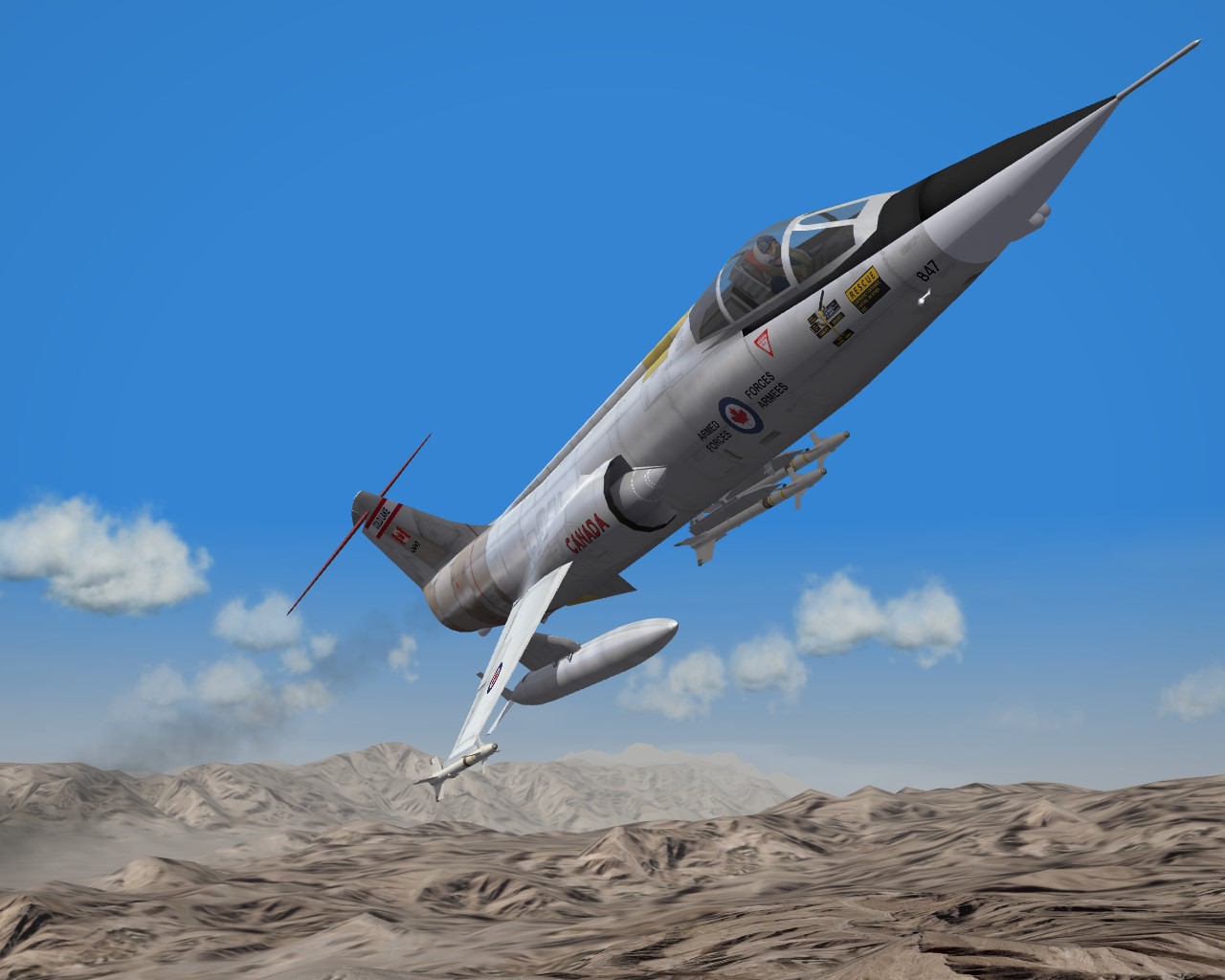
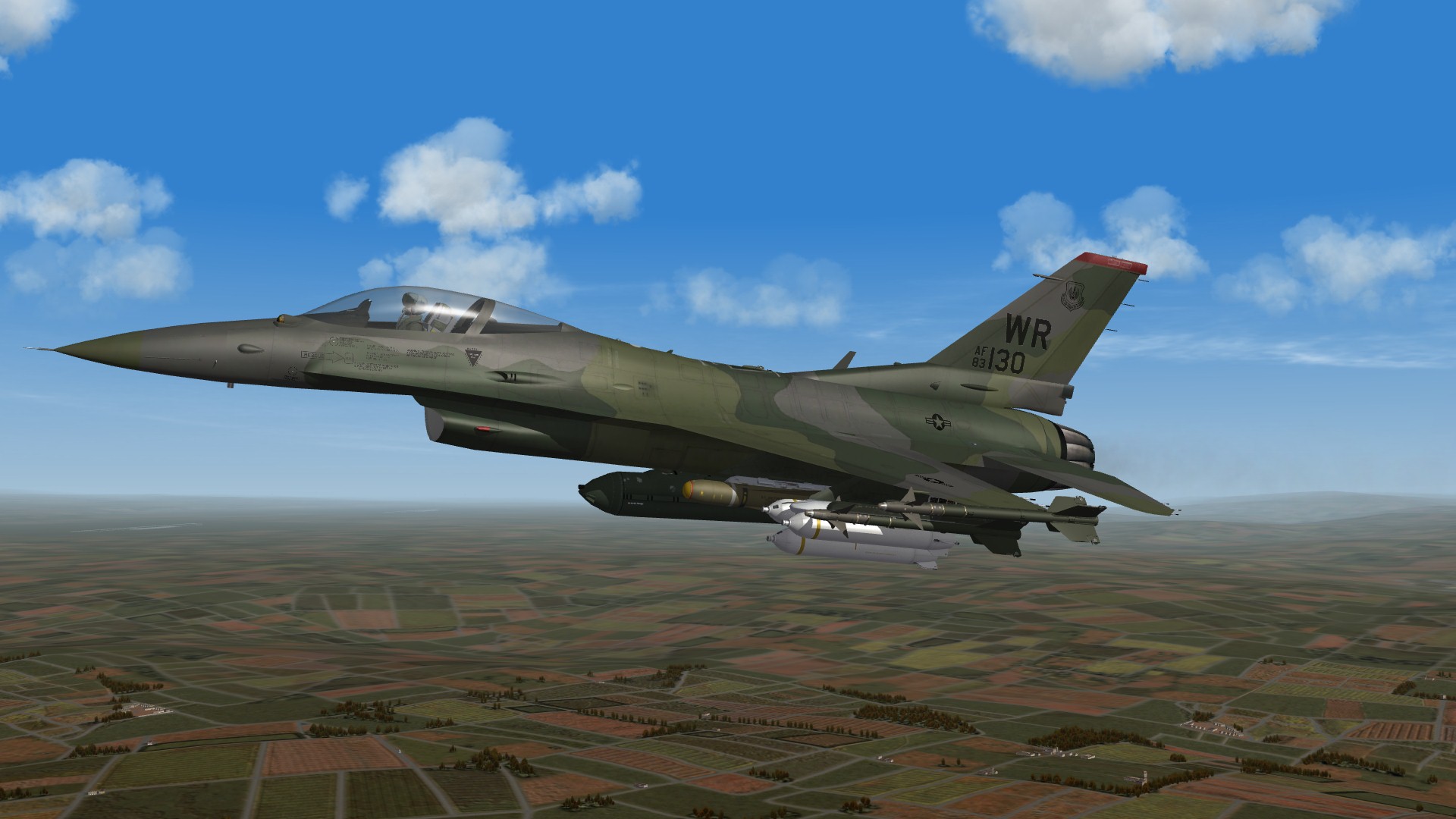
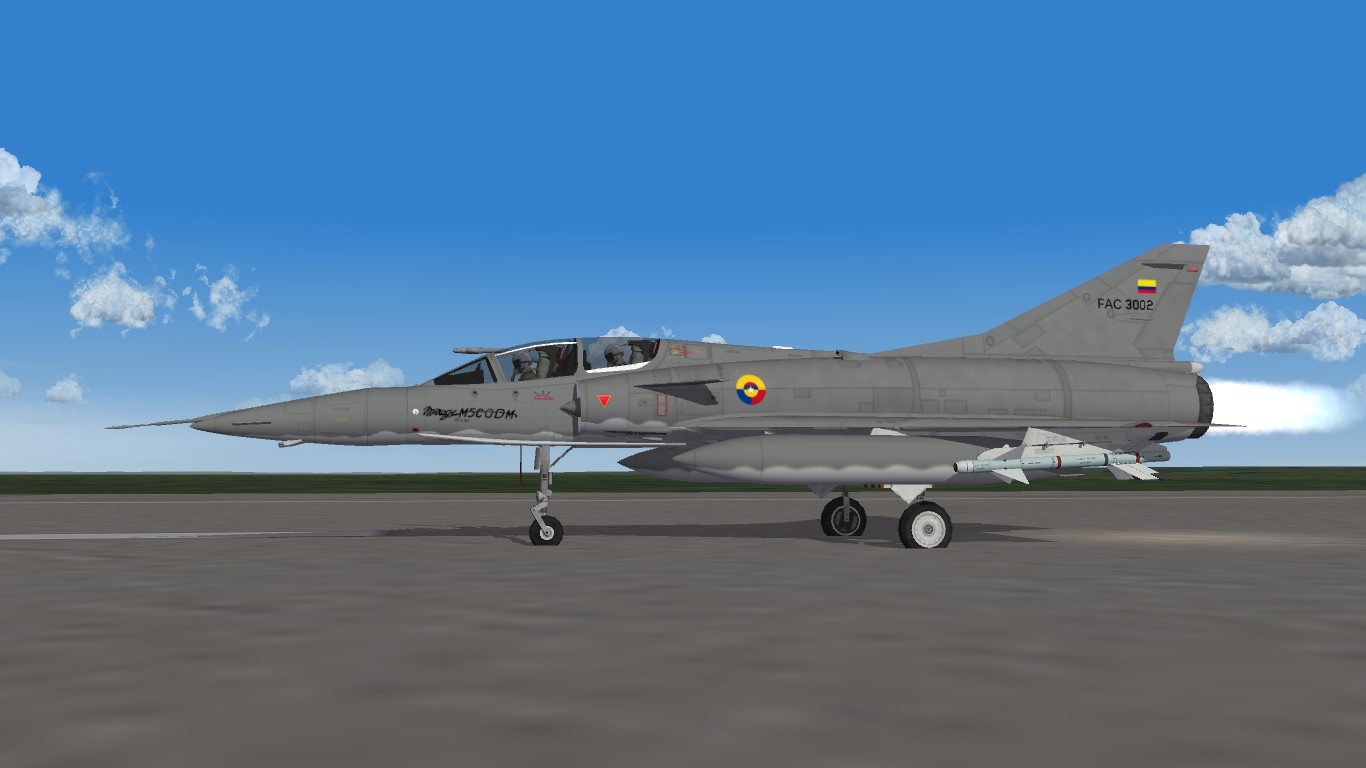
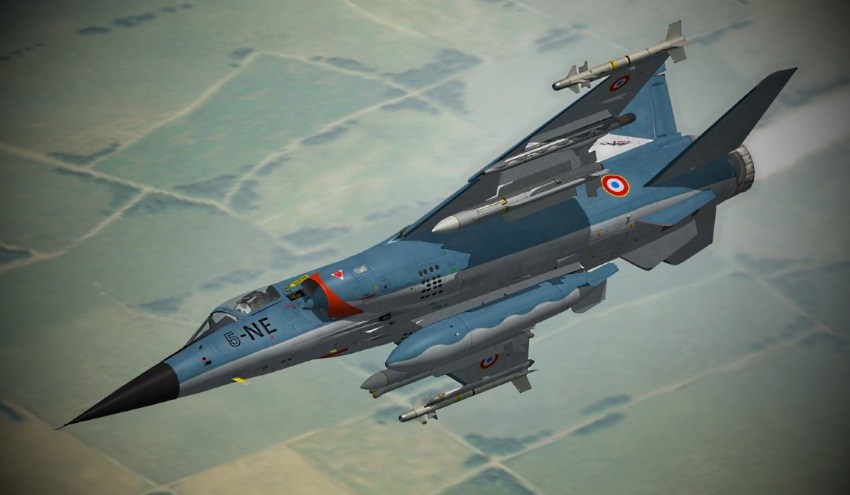
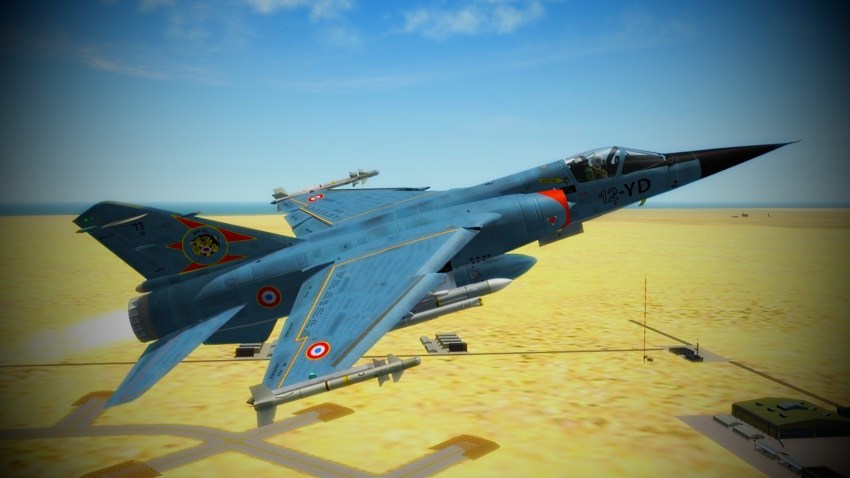

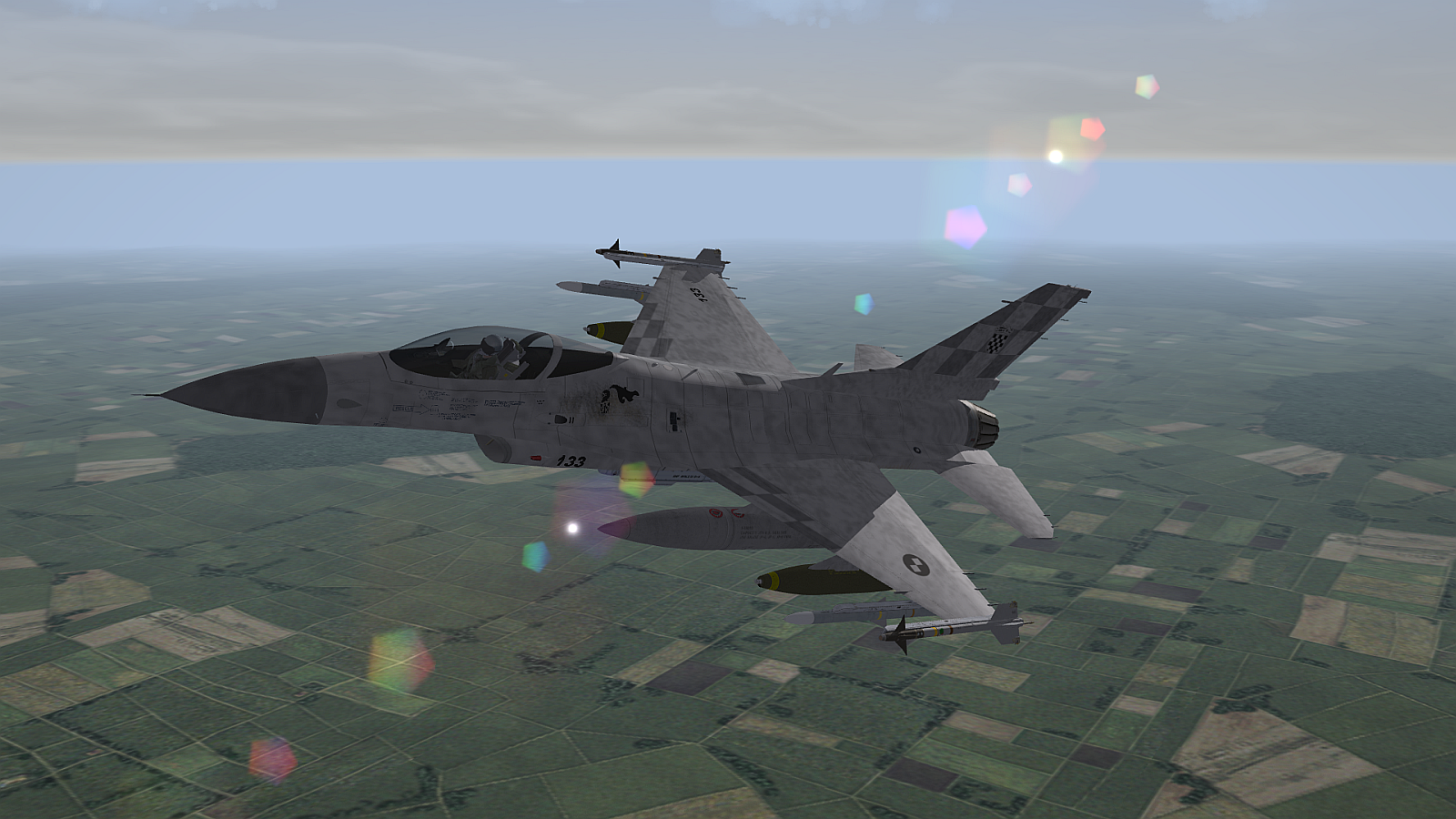
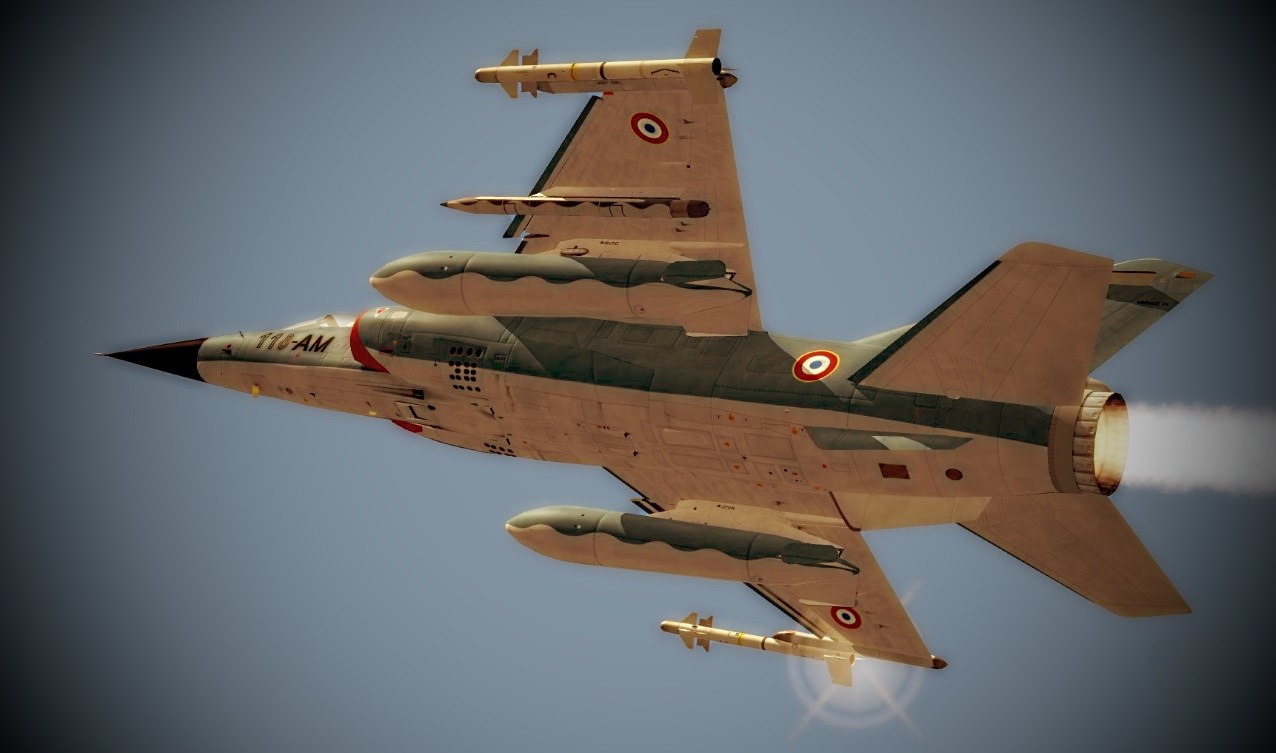
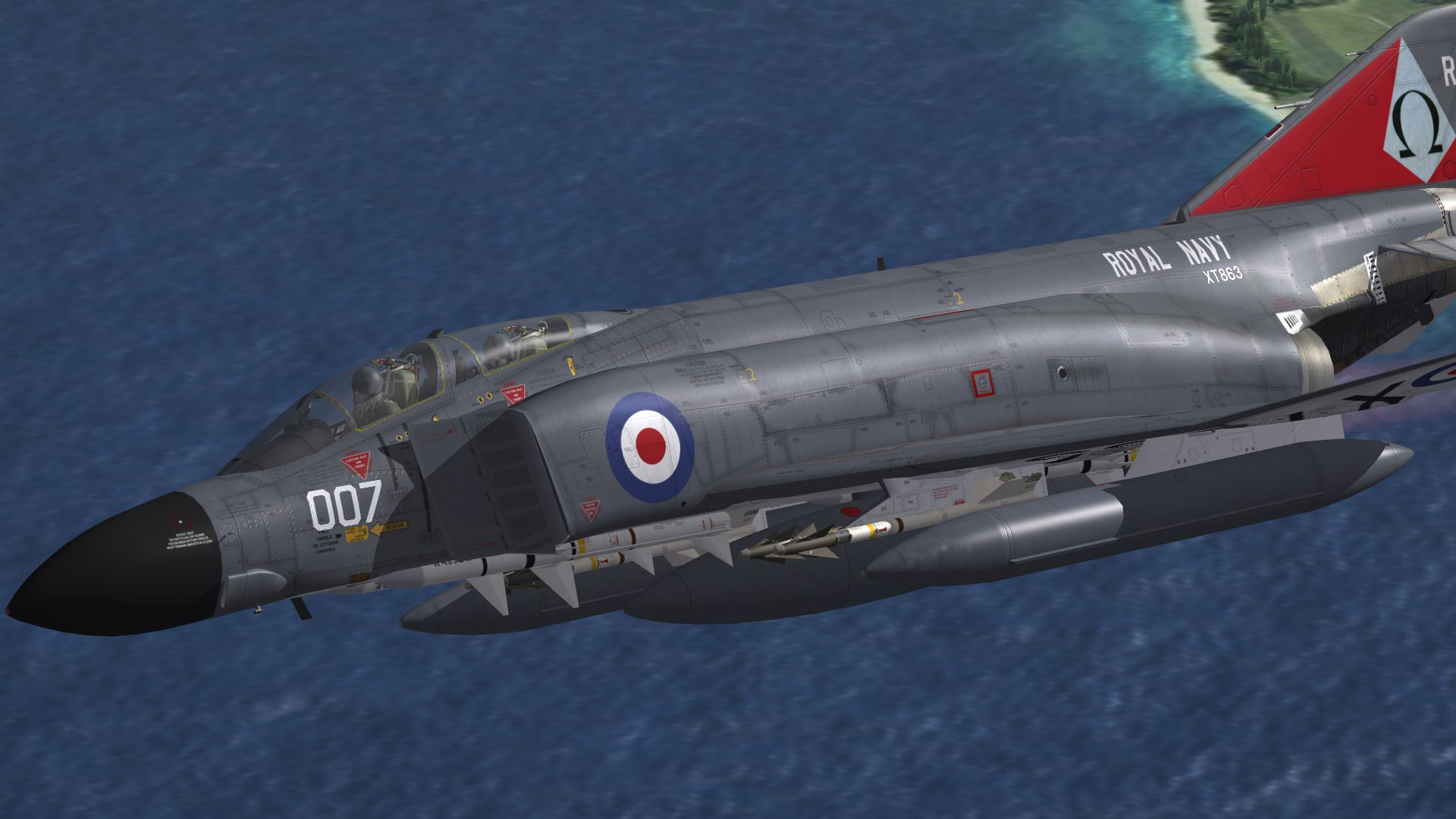
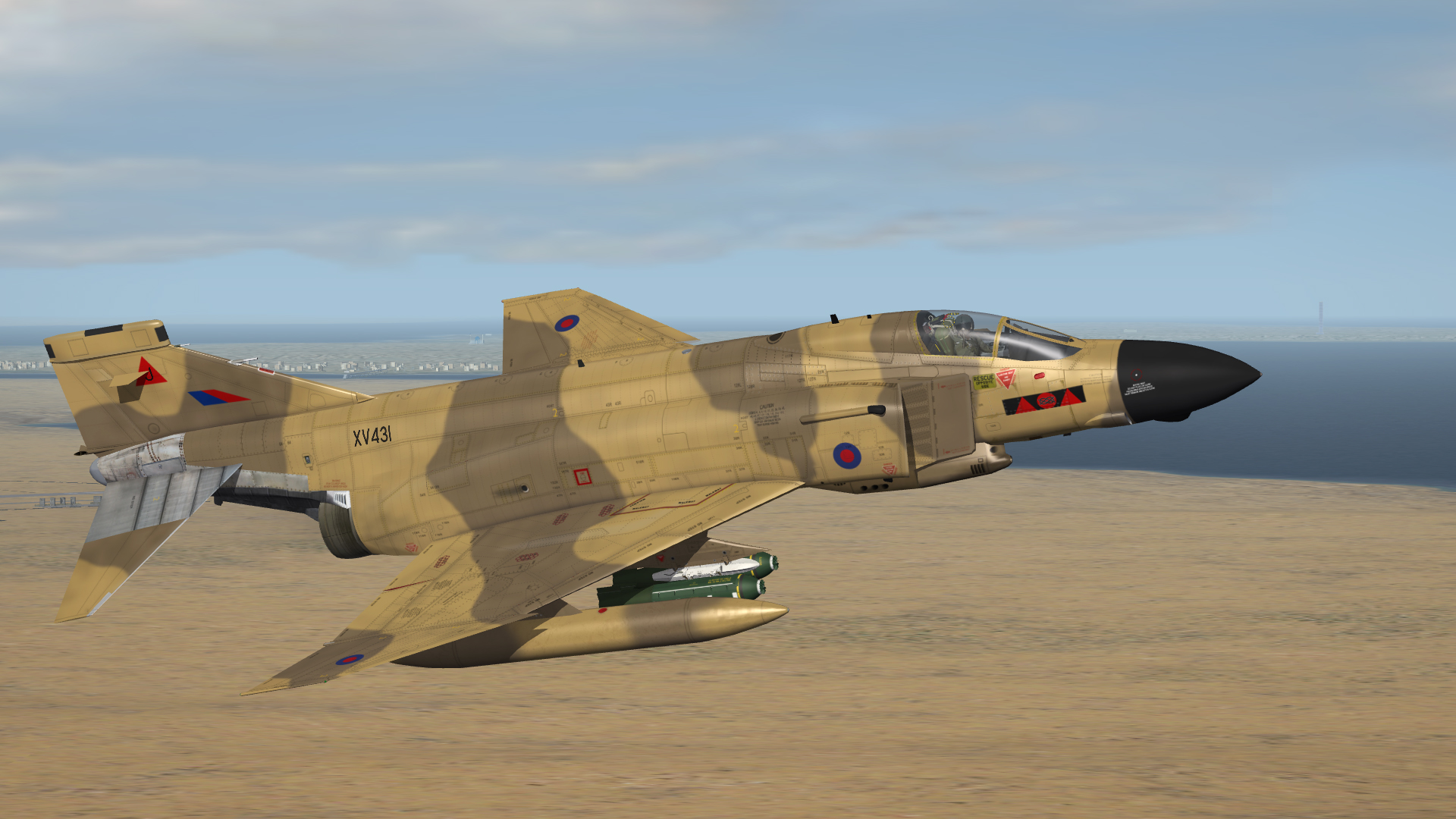


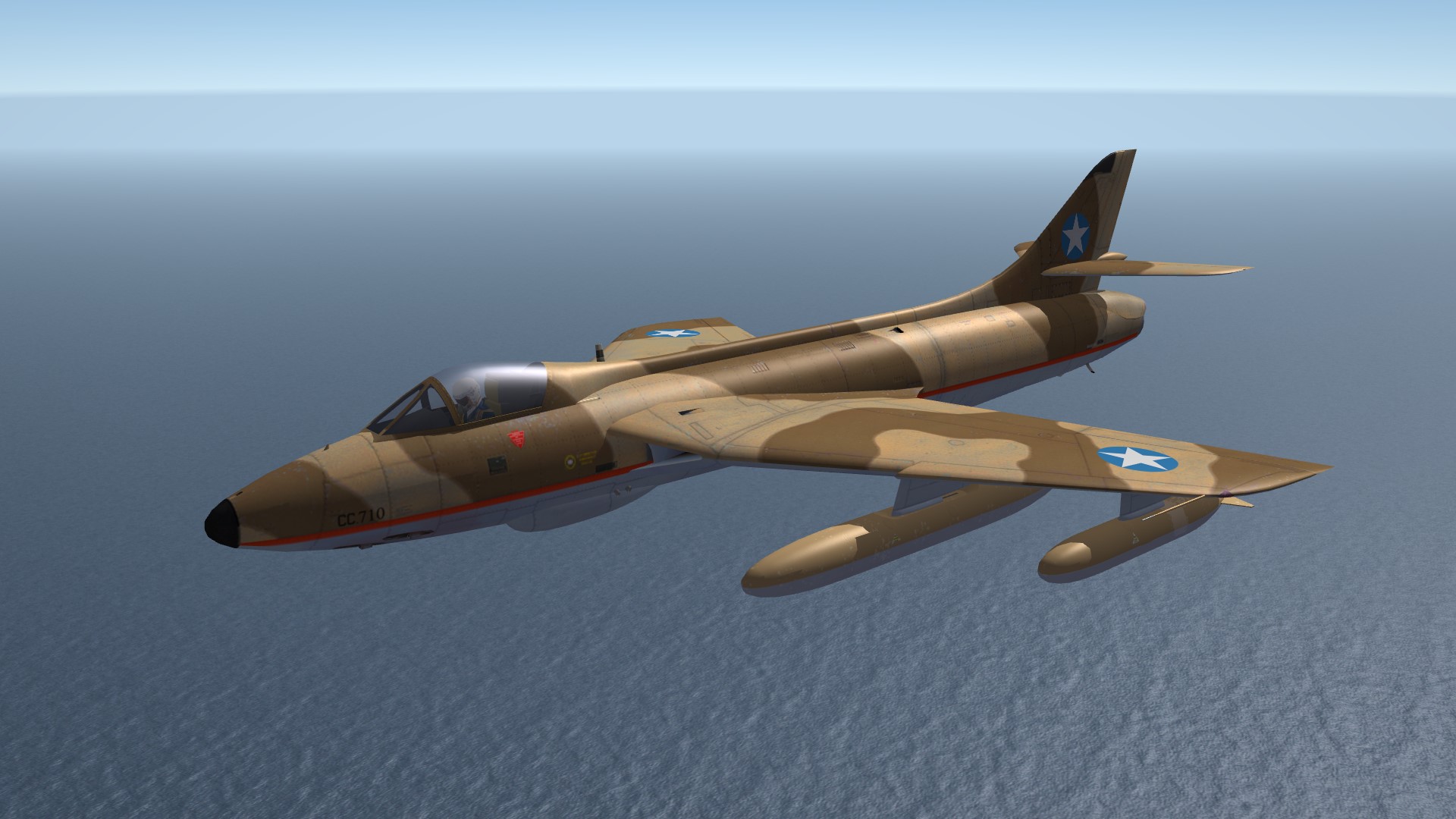
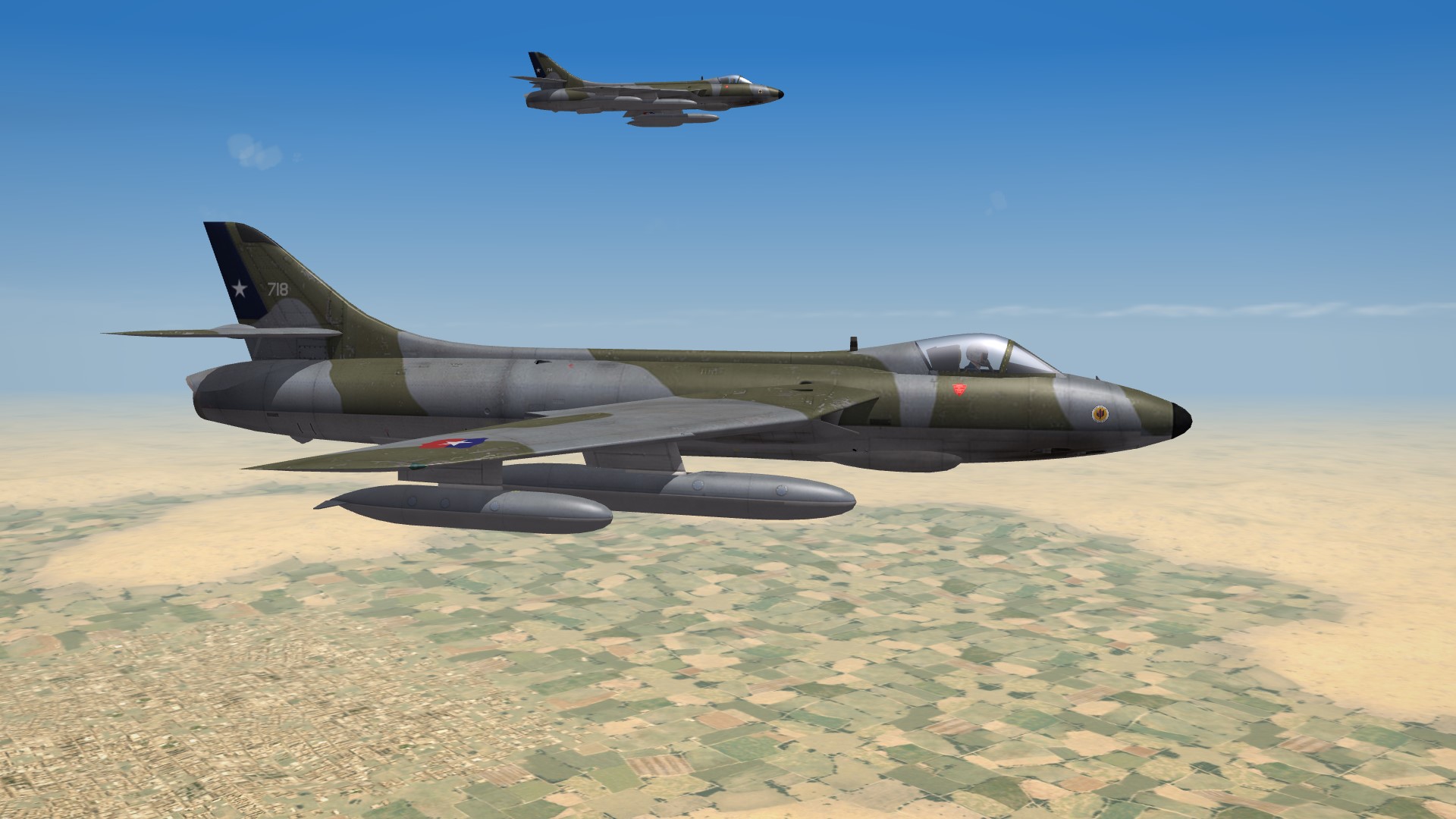
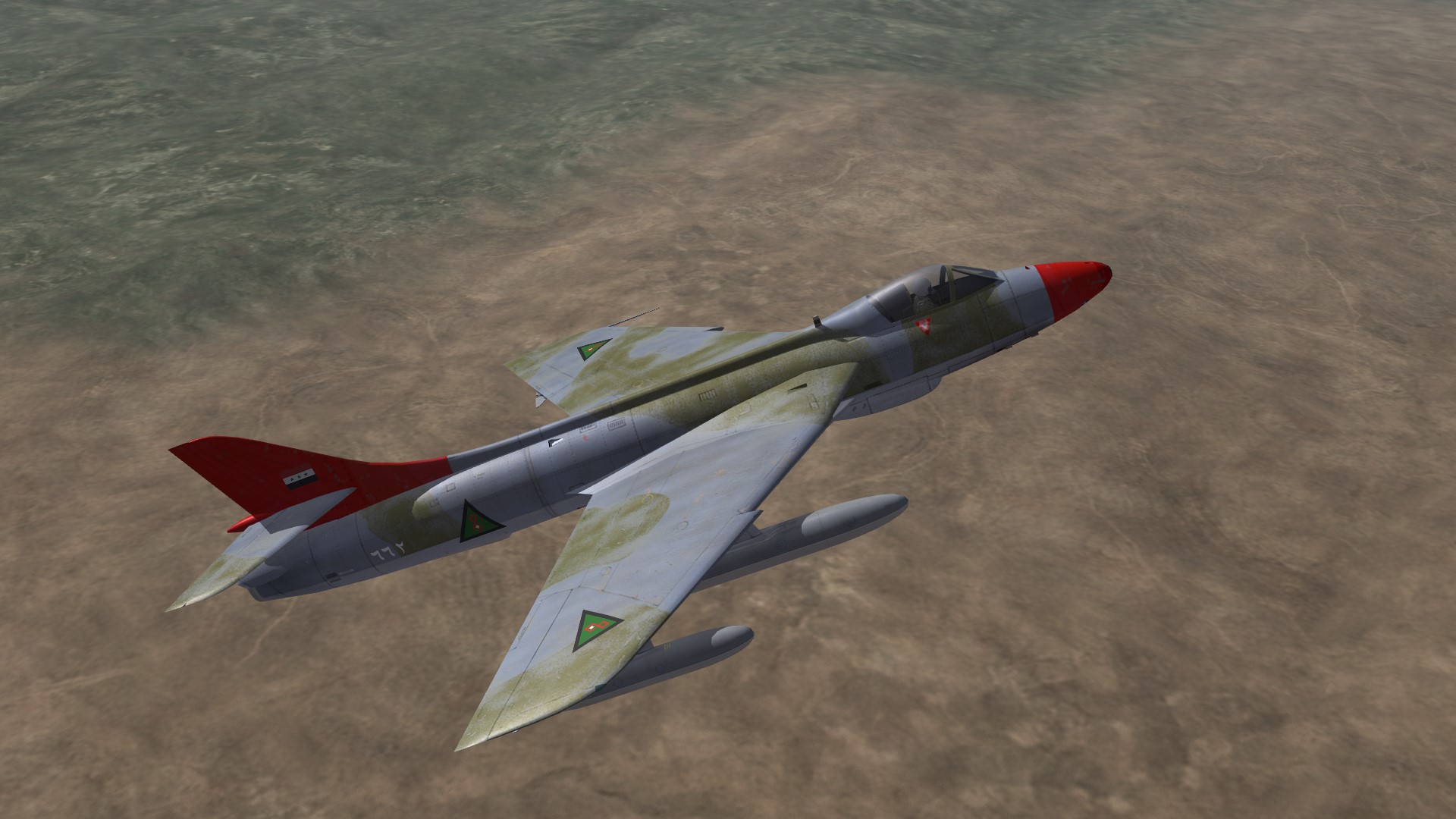

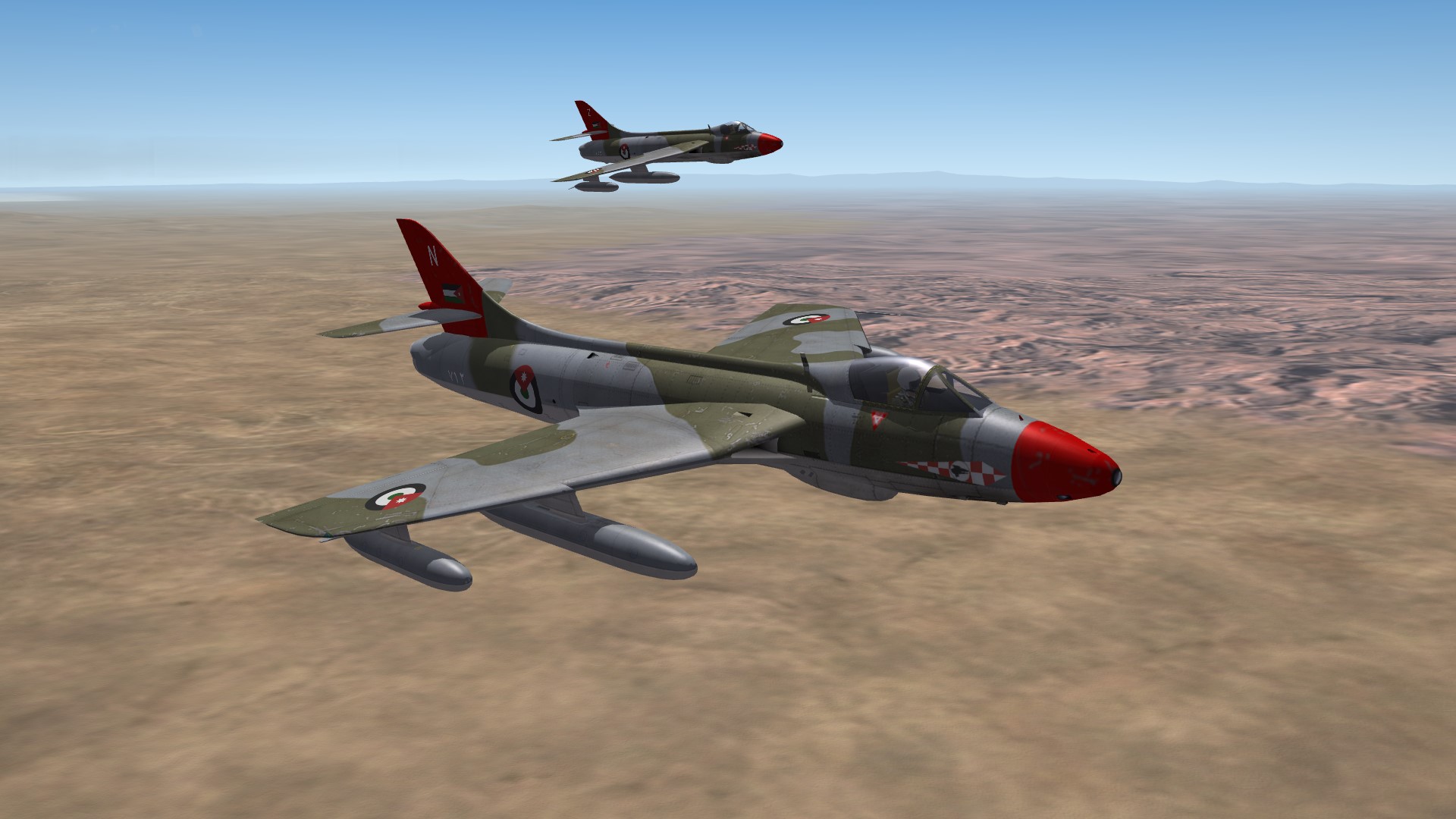




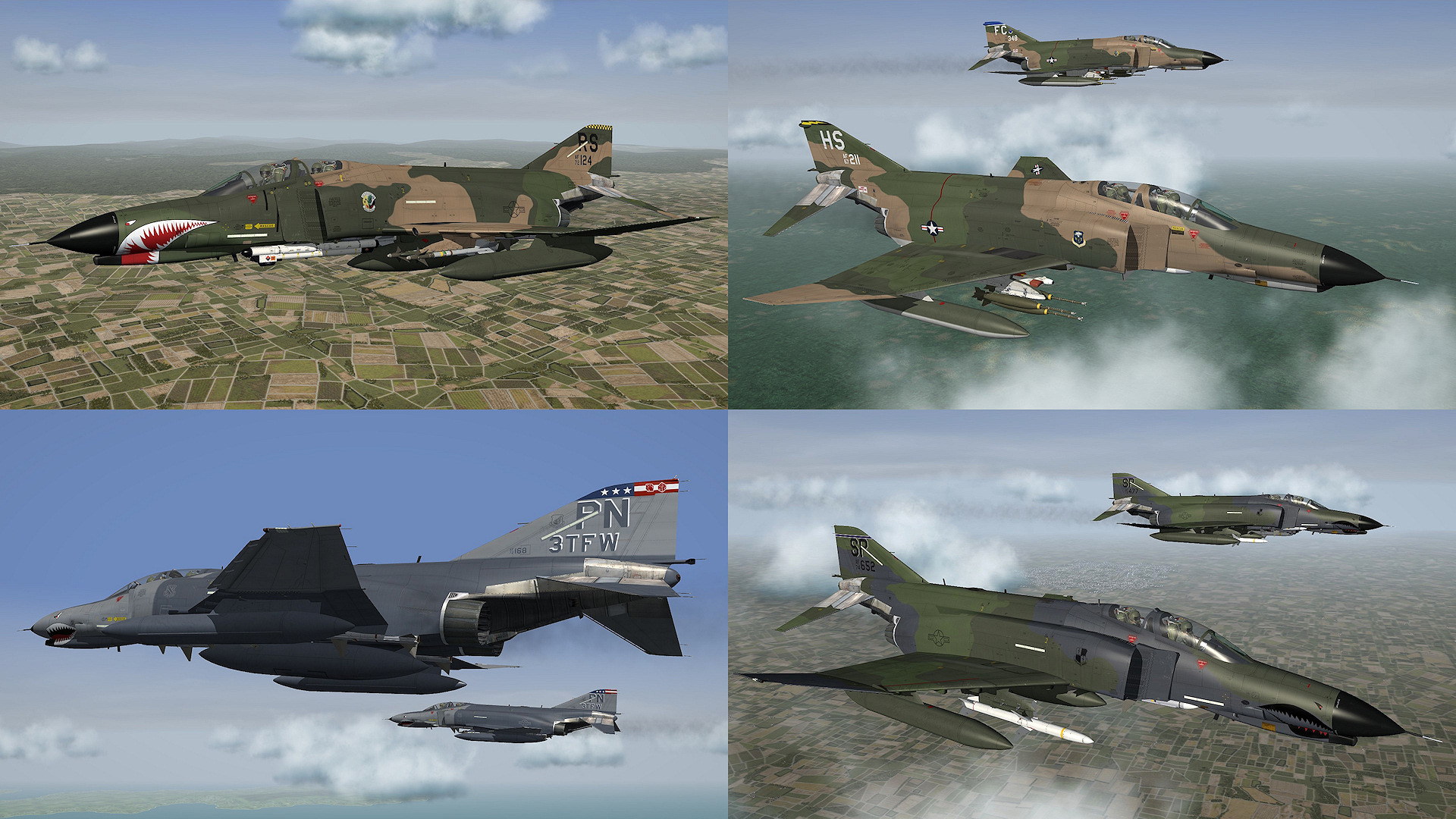

SF2 F-104 Starfighter Super Mega Pack 2016
in F-104
Posted
CF-104?
Main article: Canadair CF-104
200 Canadian-built versions, built under license by Canadair and optimized for both nuclear strike and 2-stage-to-orbit payload delivery, having NASARR R-24A radar with air-to-air modes, cannon deleted (restored after 1972), additional internal fuel cell, and Canadian J79-OEL-7 engines with 10,000 lbf (44 kN)/15,800 lbf (70 kN) thrust.
CF-104D?
38 dual-control trainer versions of CF-104, built by Lockheed, but with Canadian J79-OEL-7 engines. Some later transferred to Denmark, Norway, and Turkey.